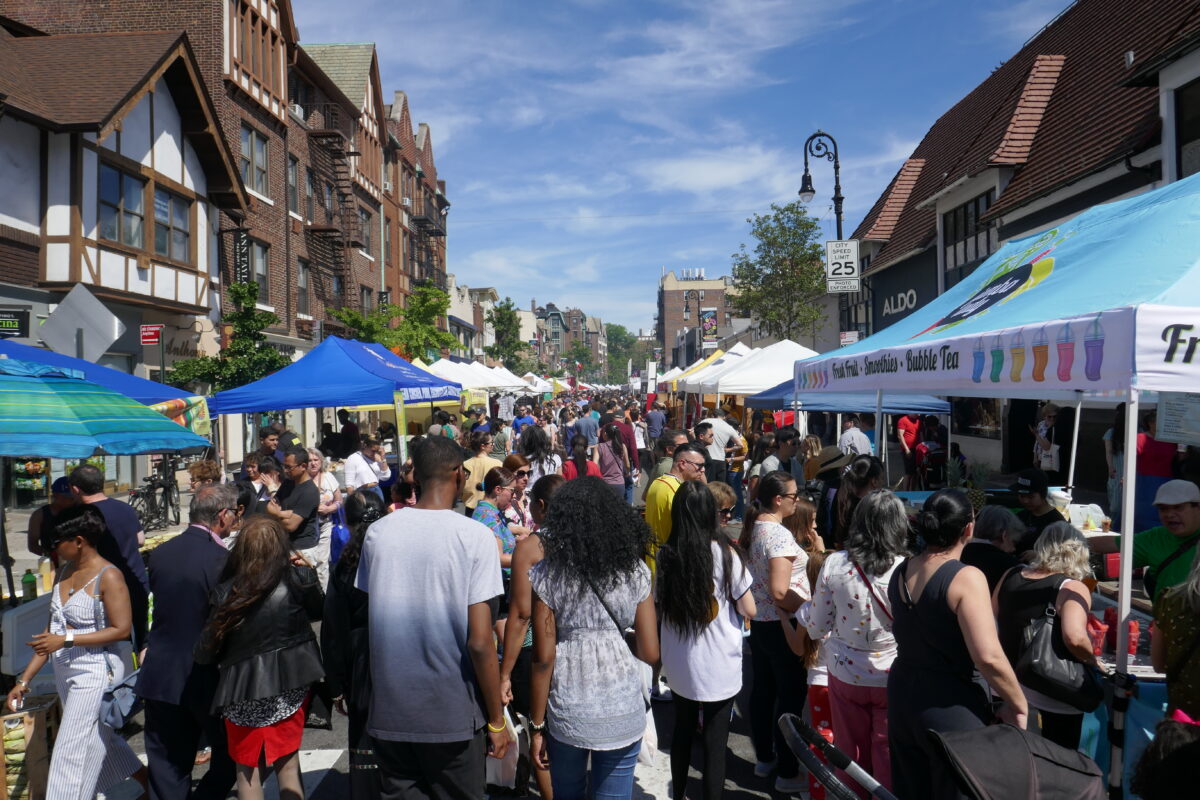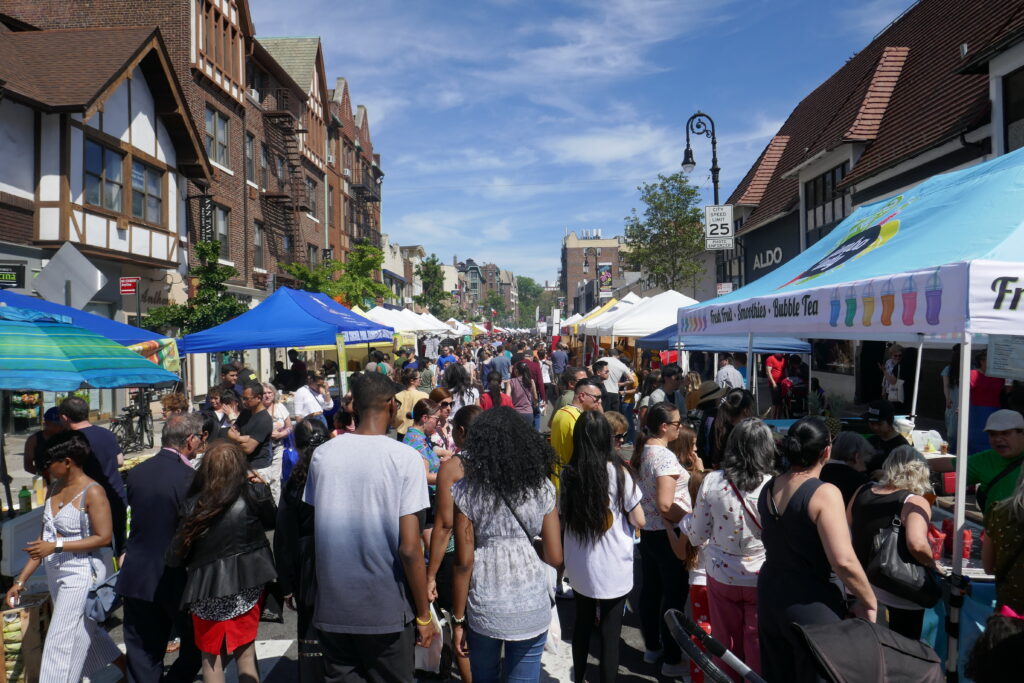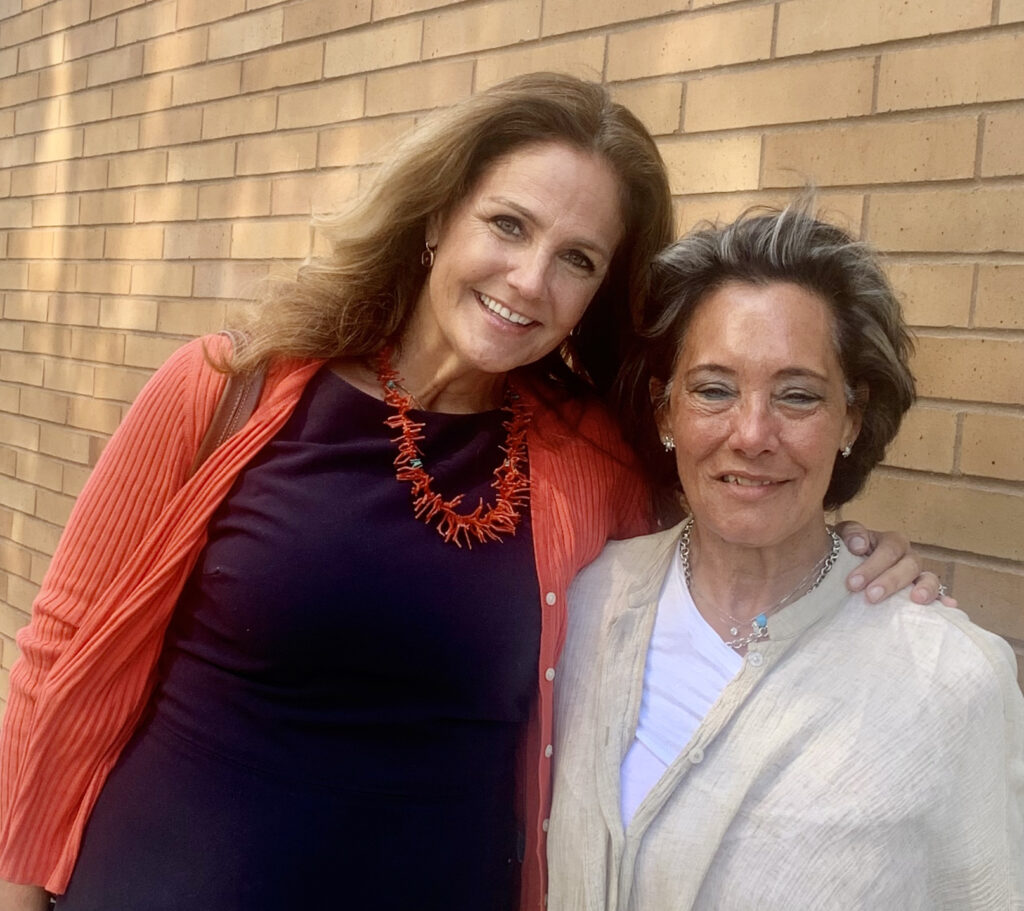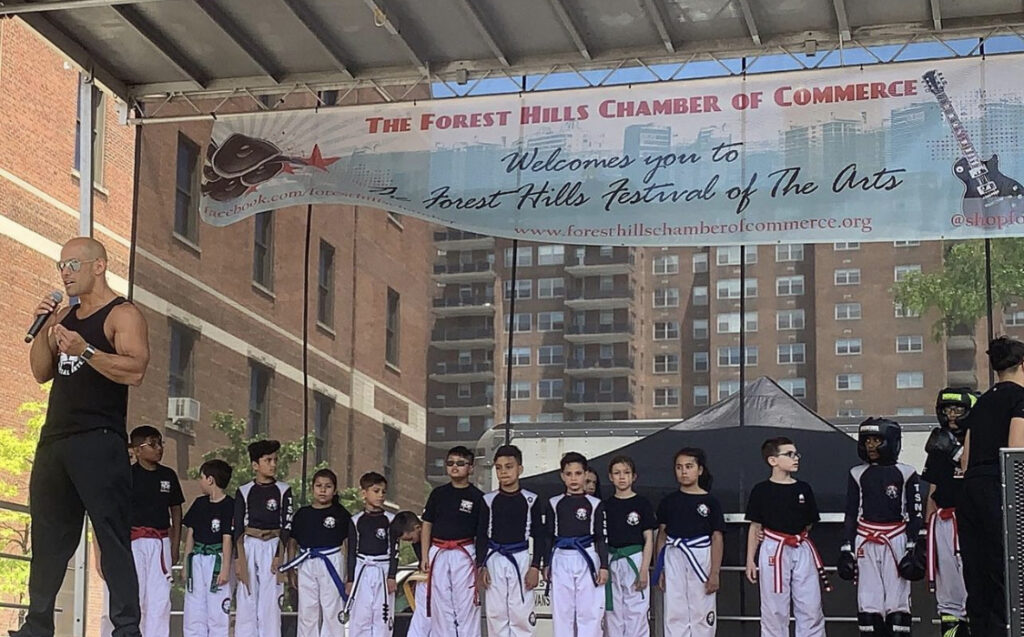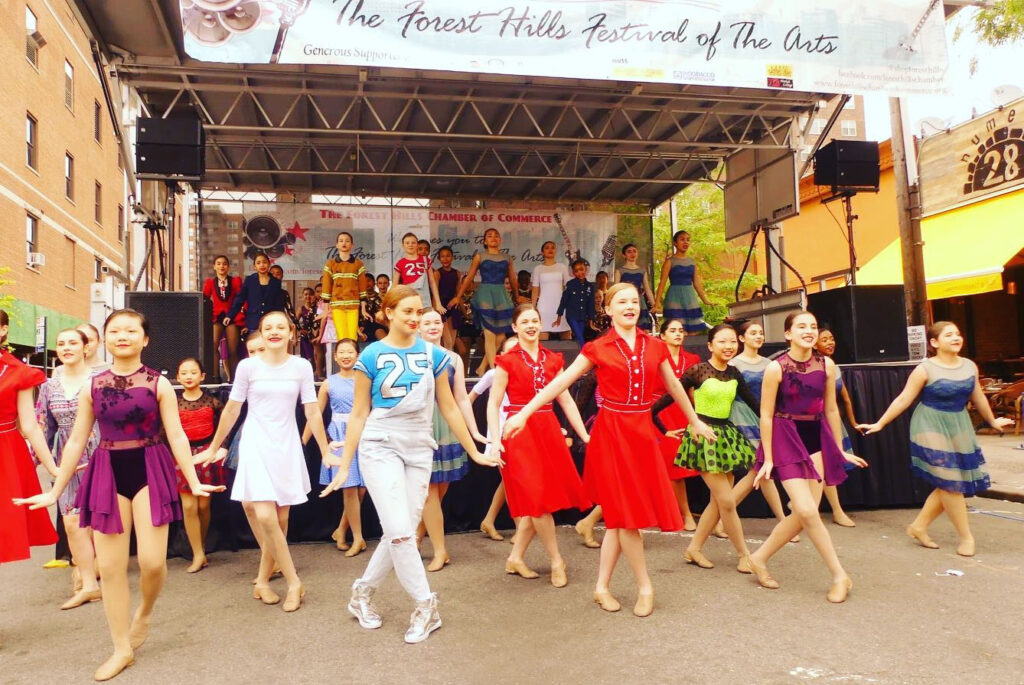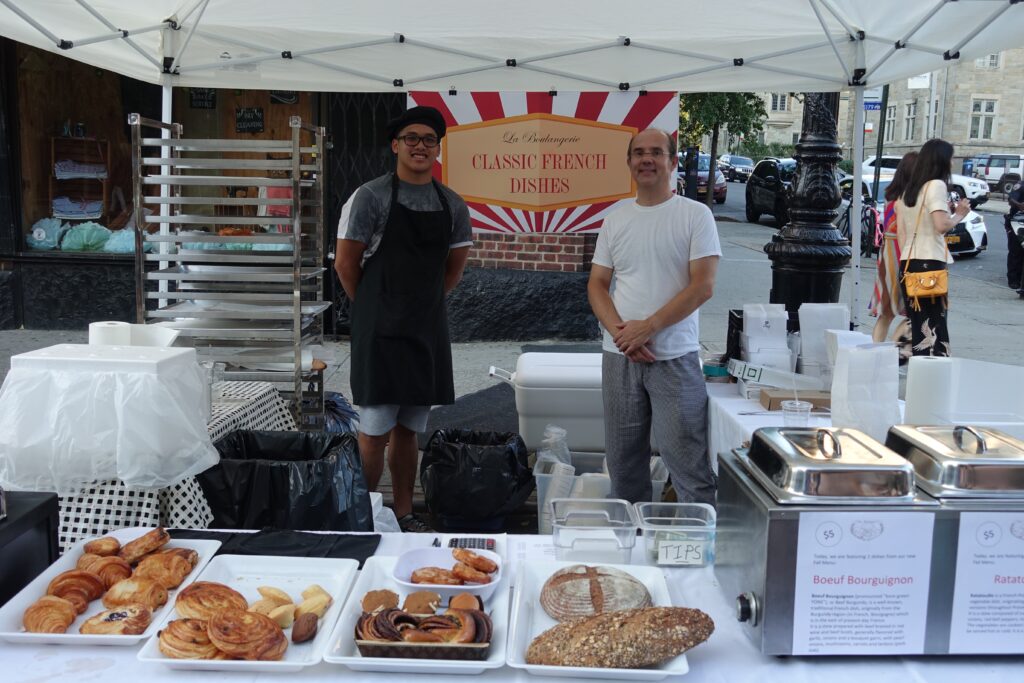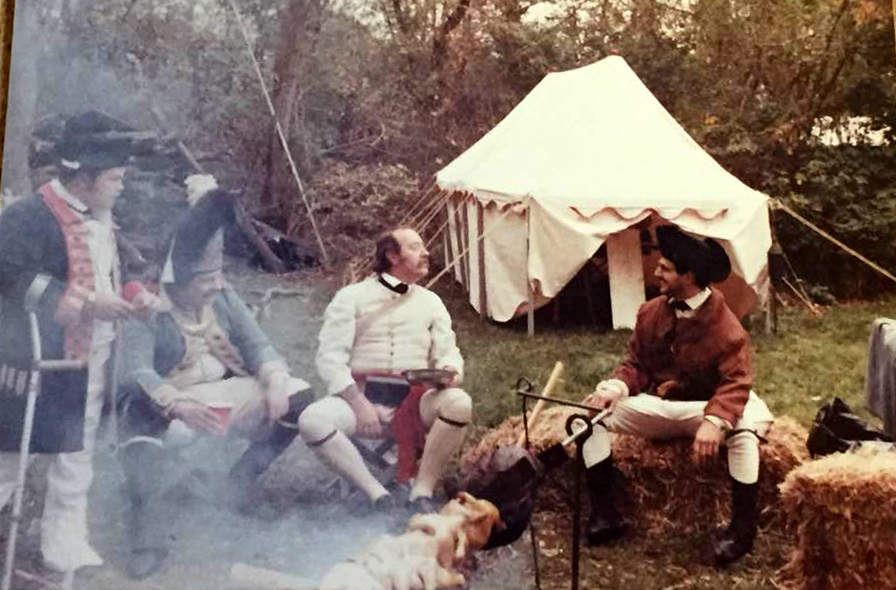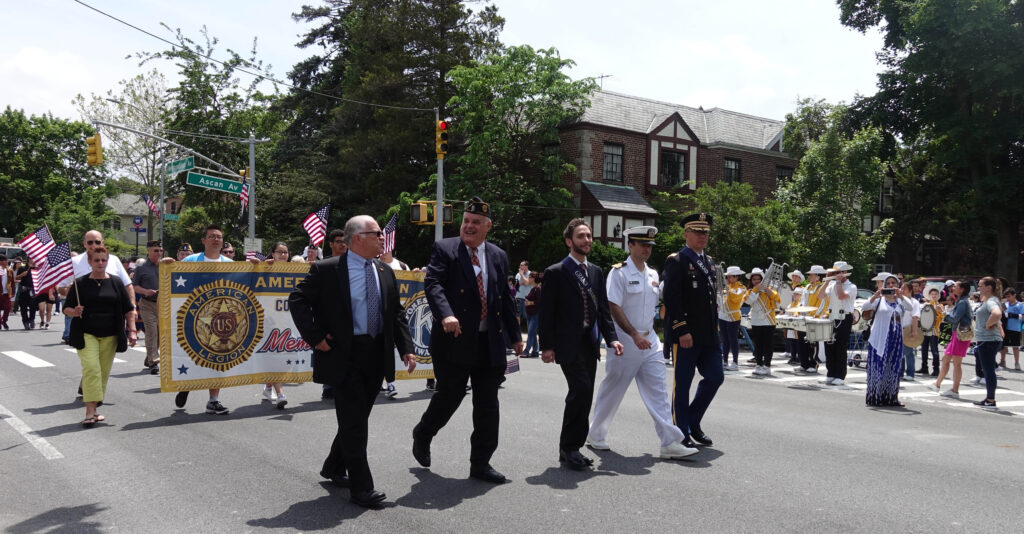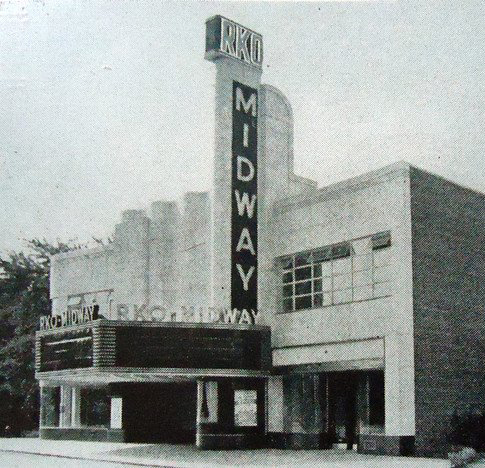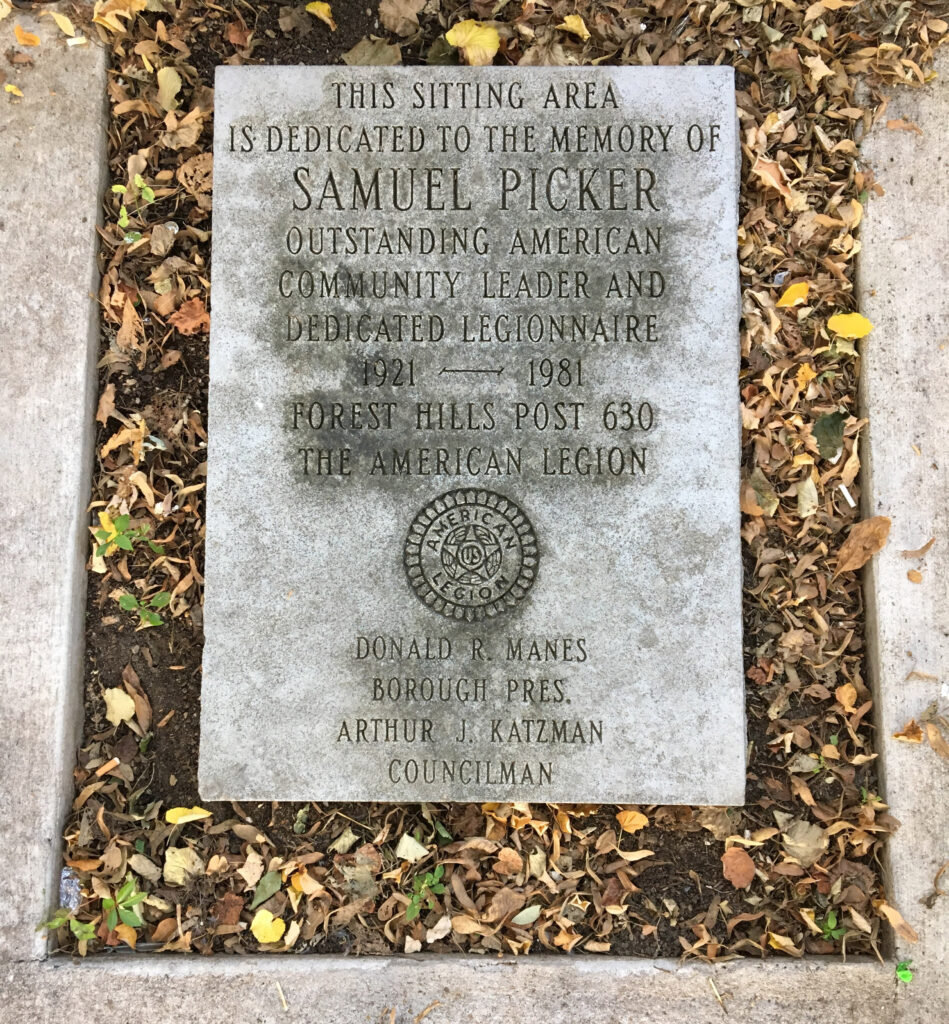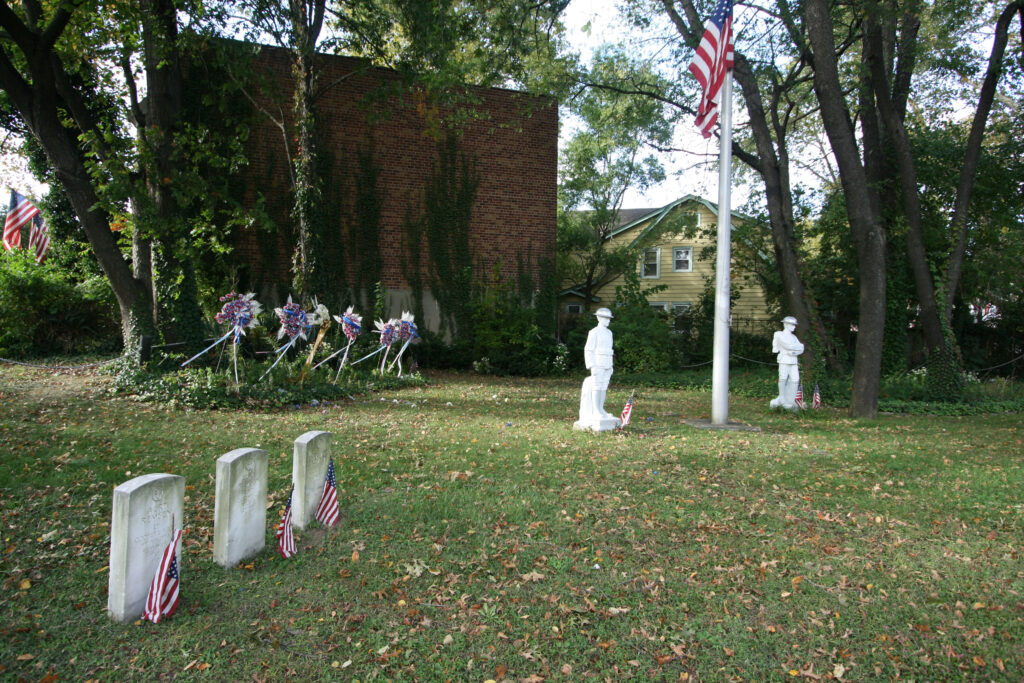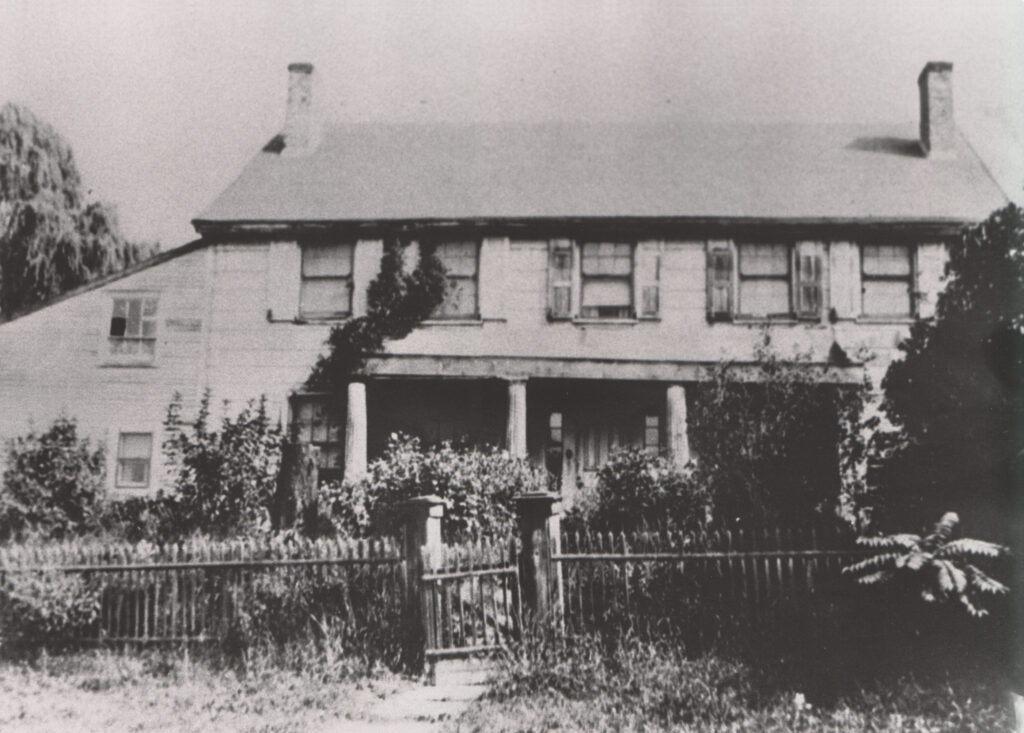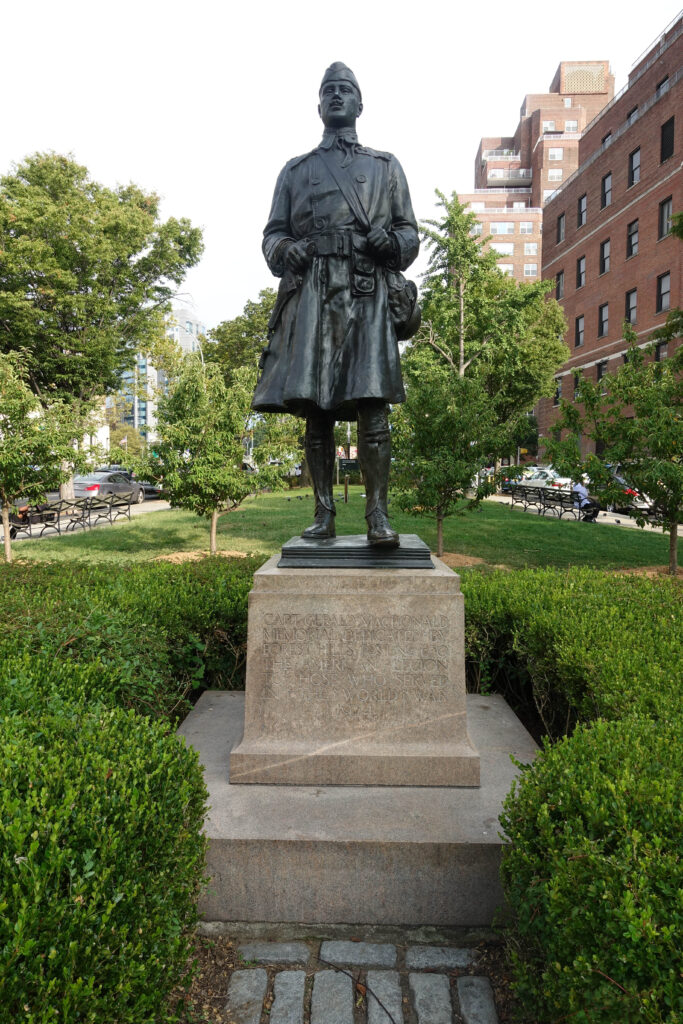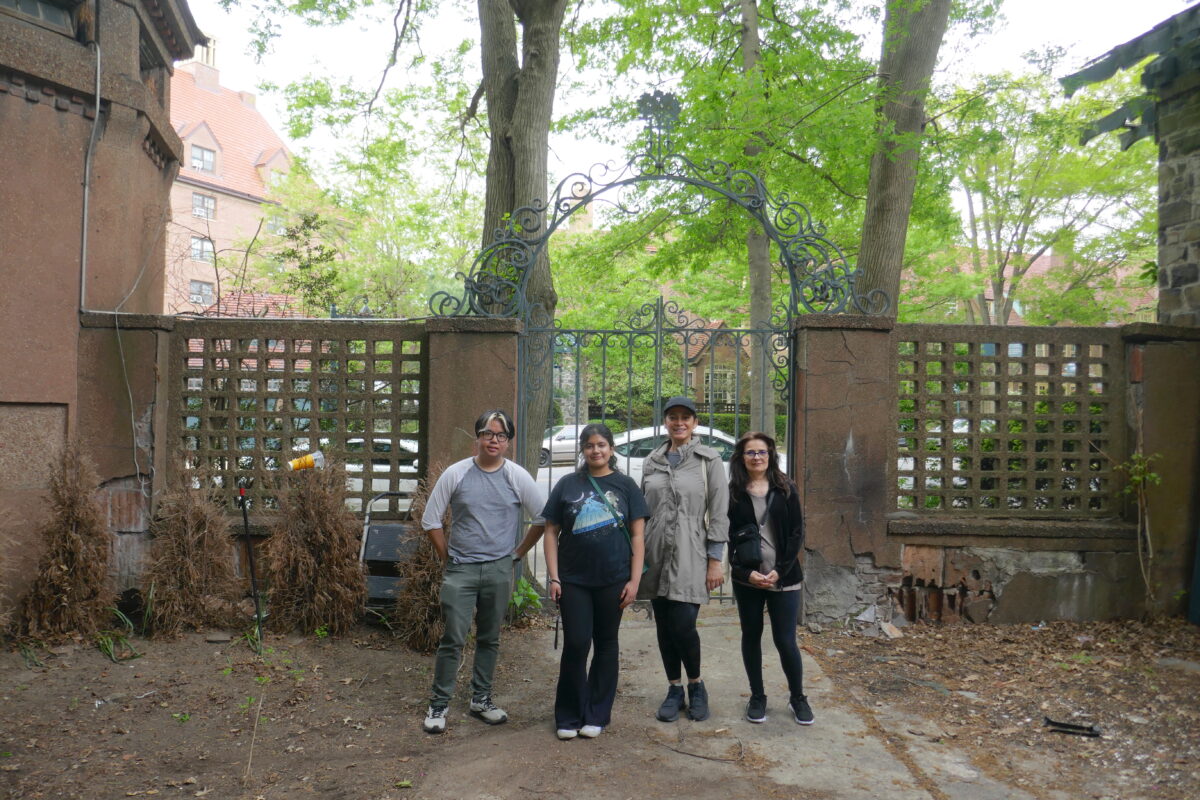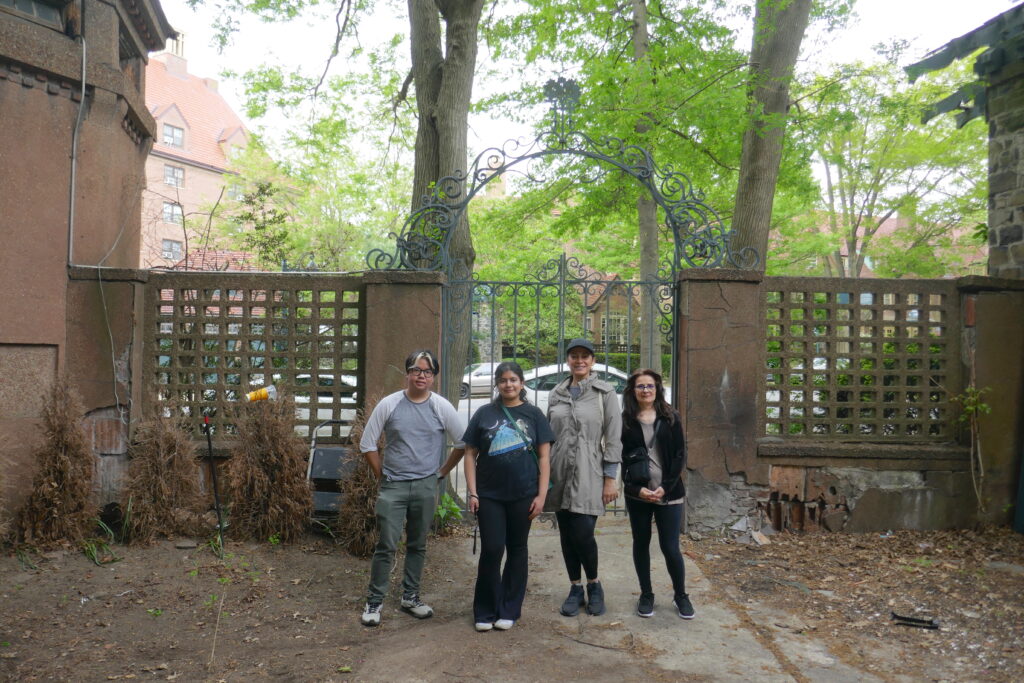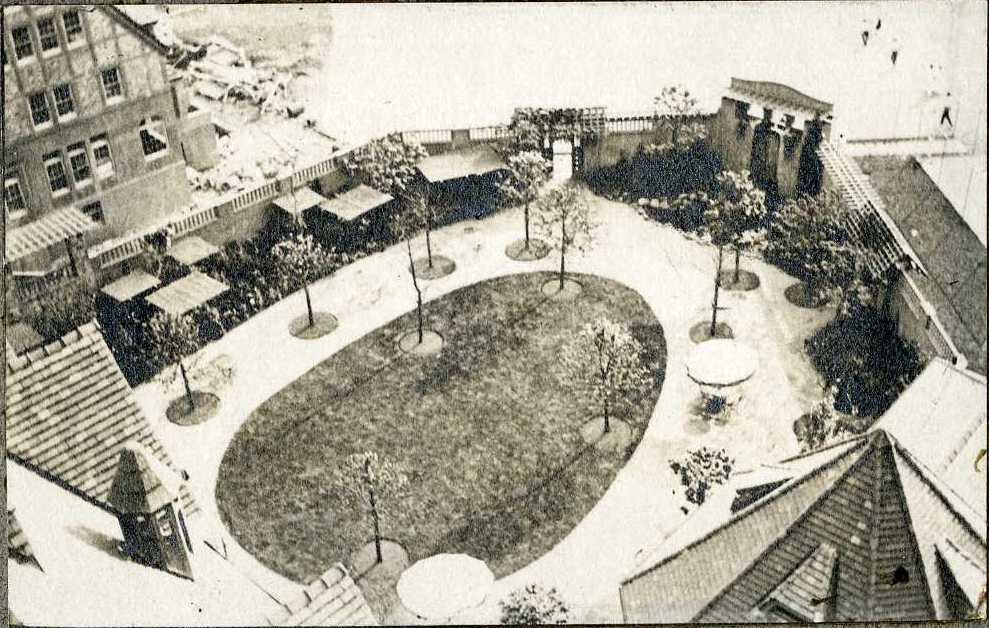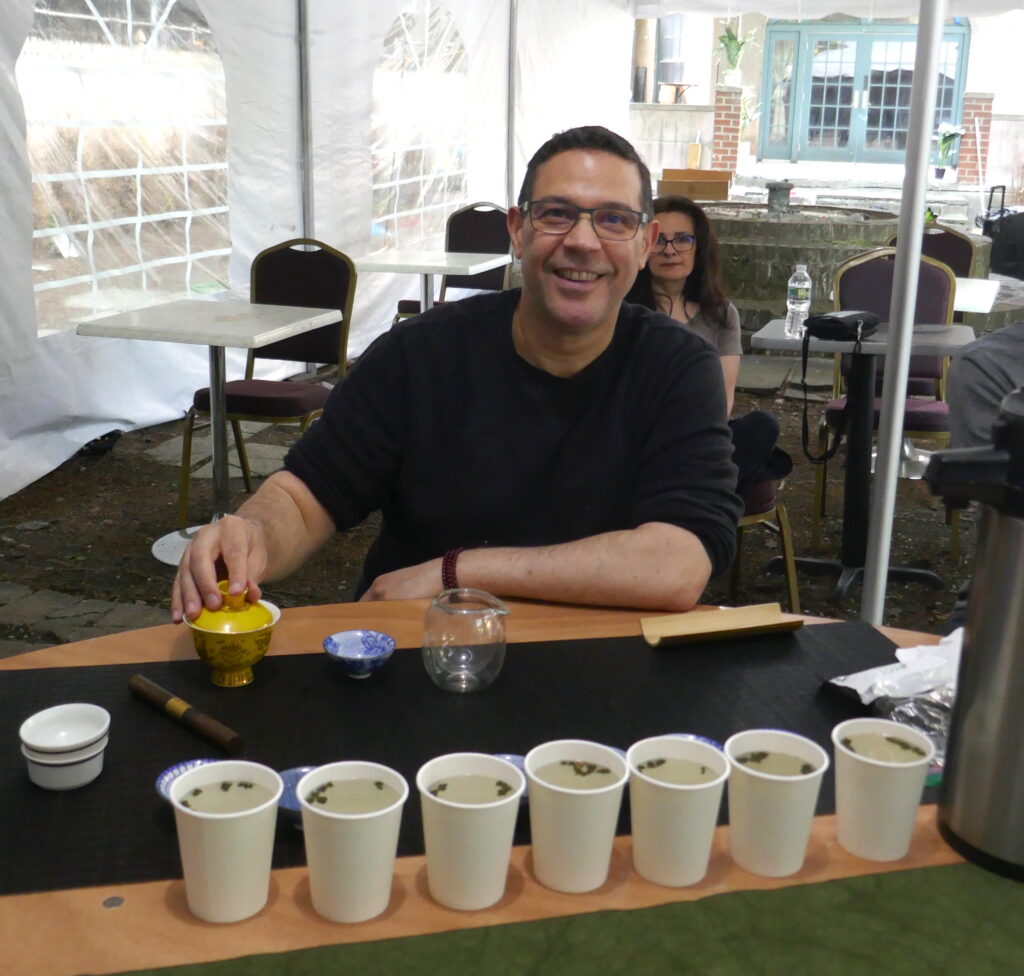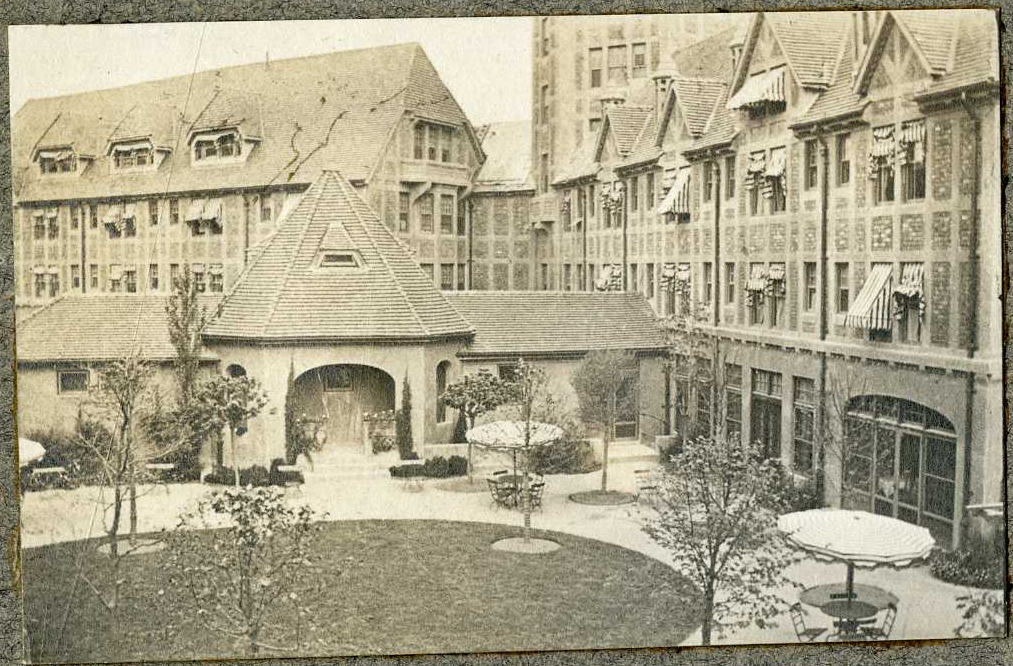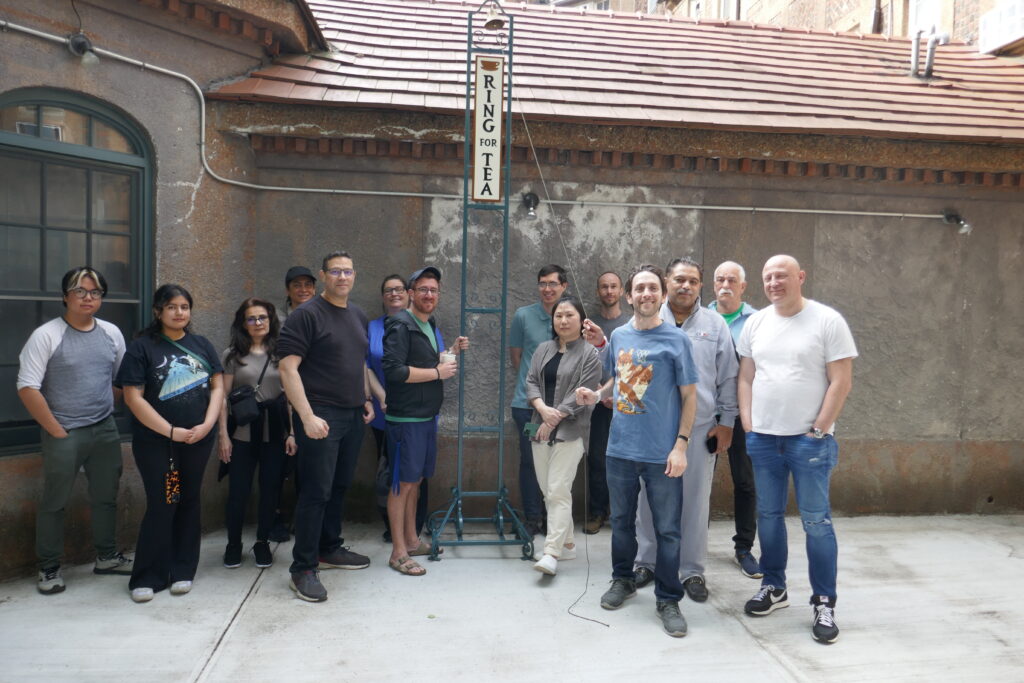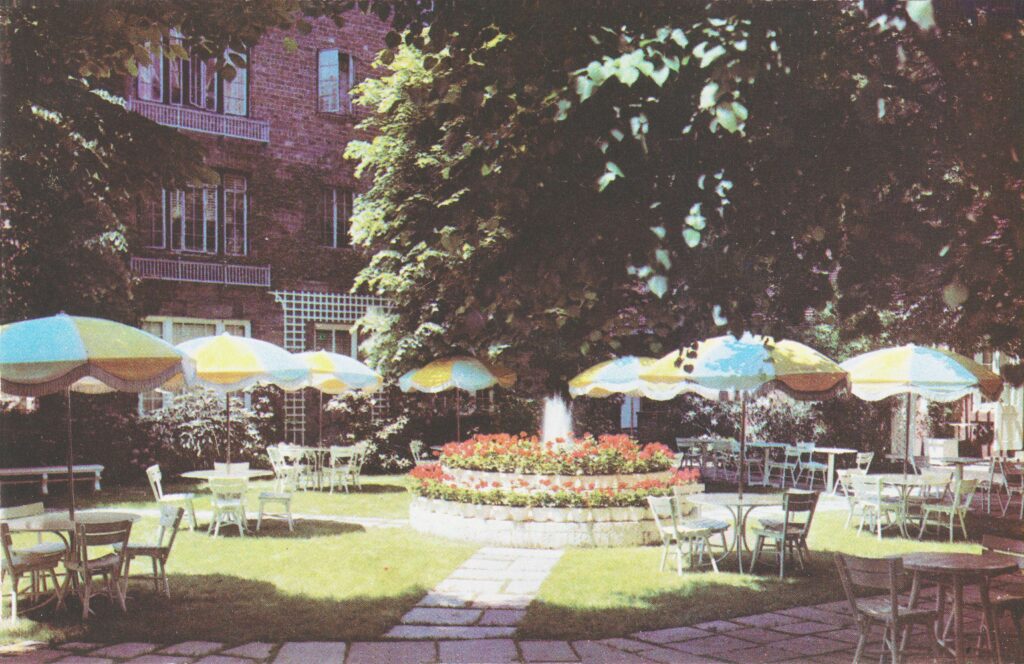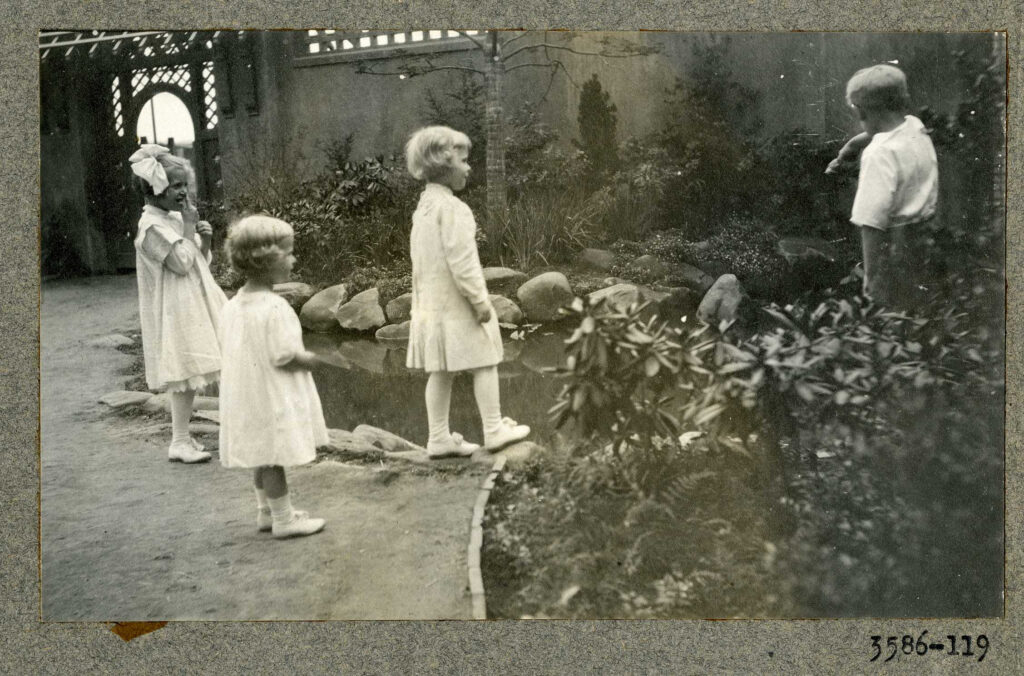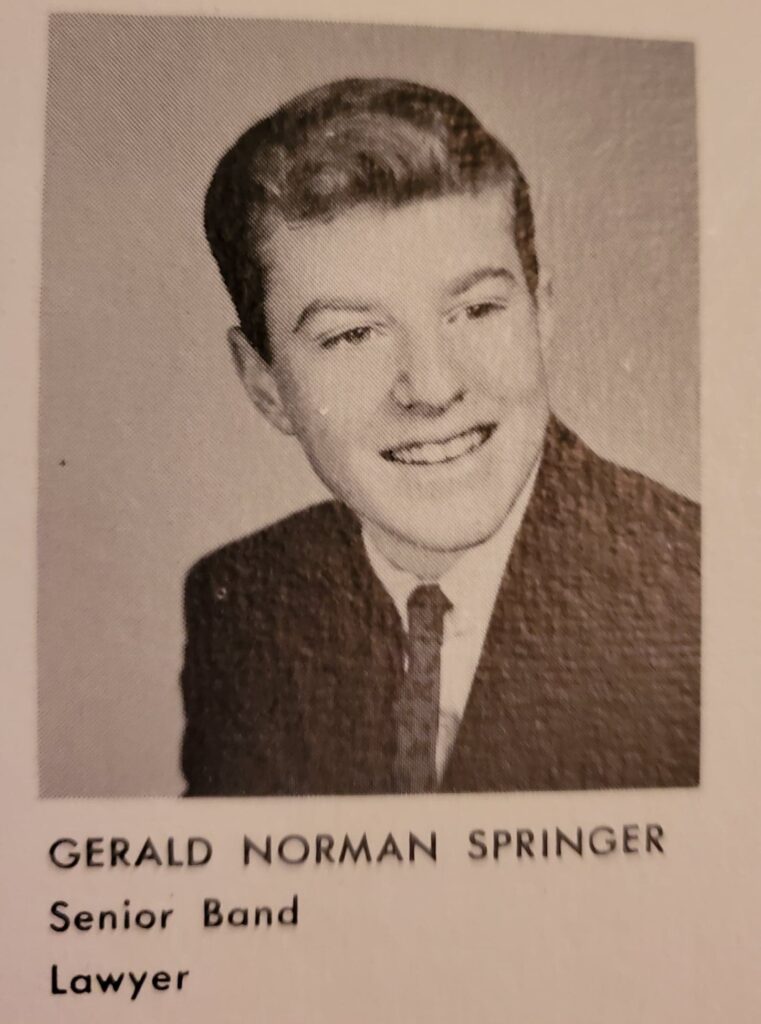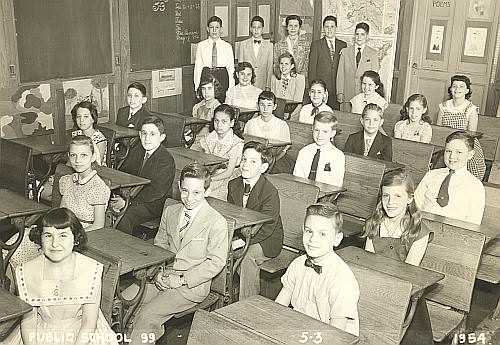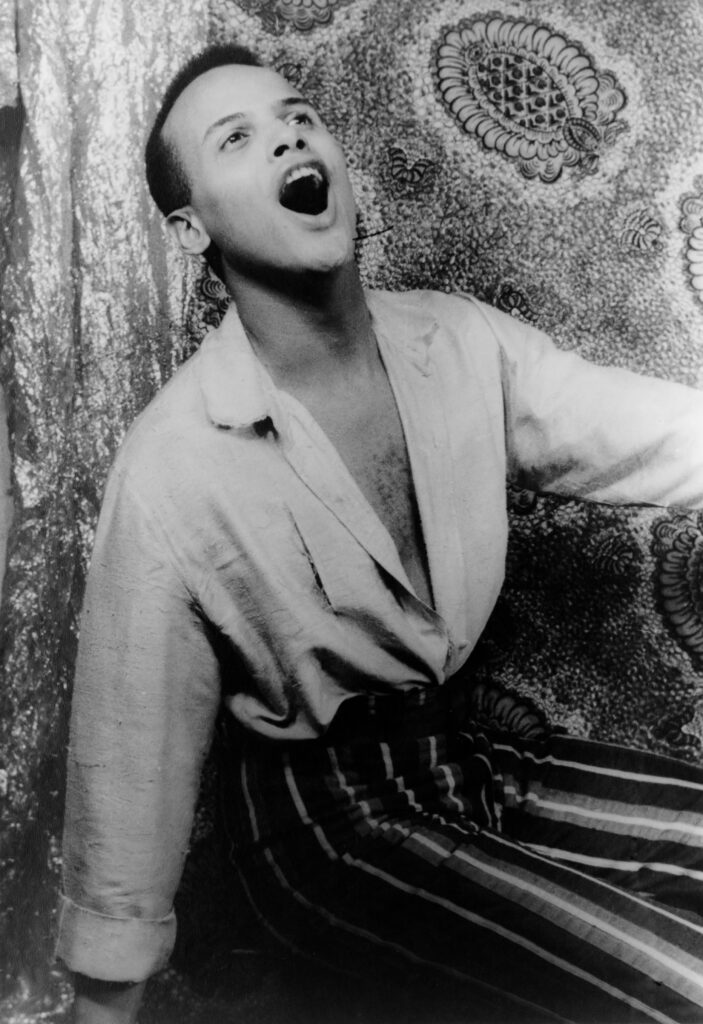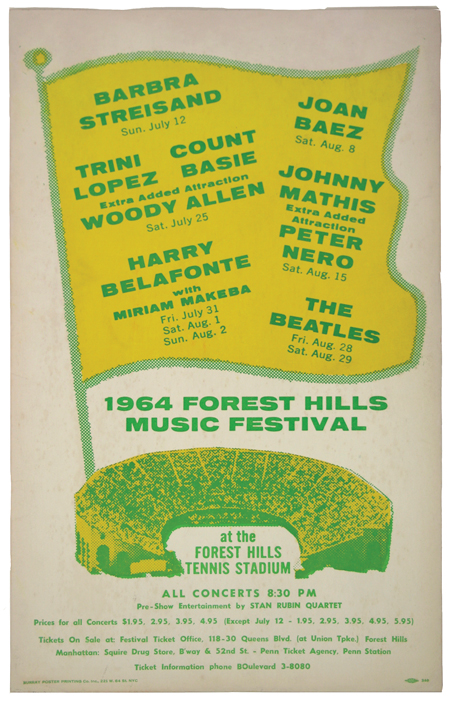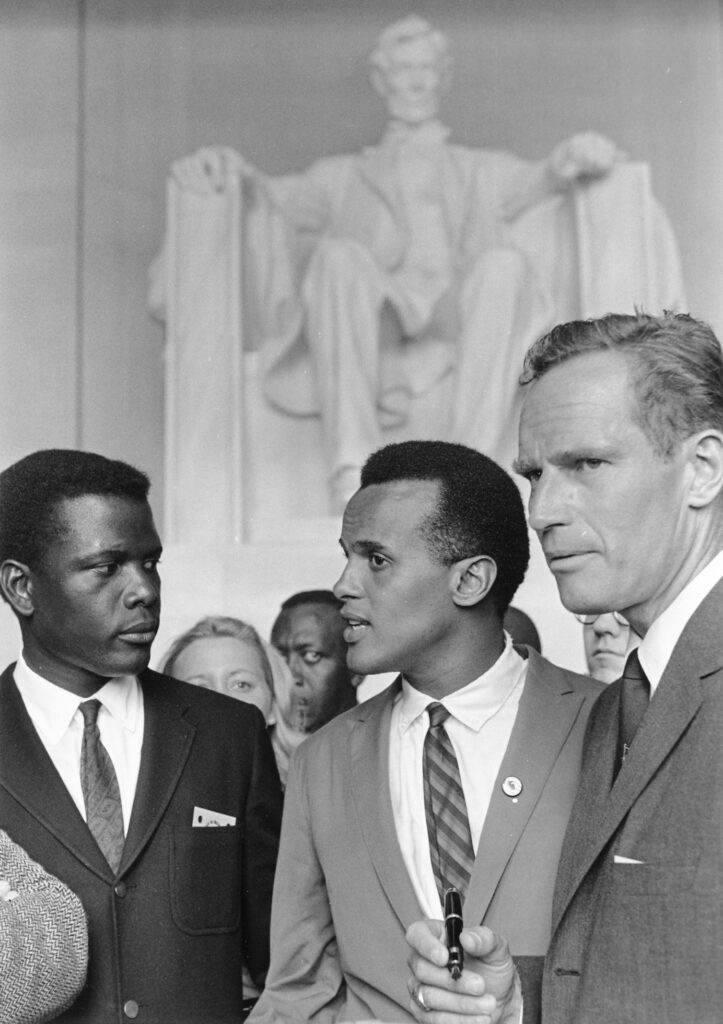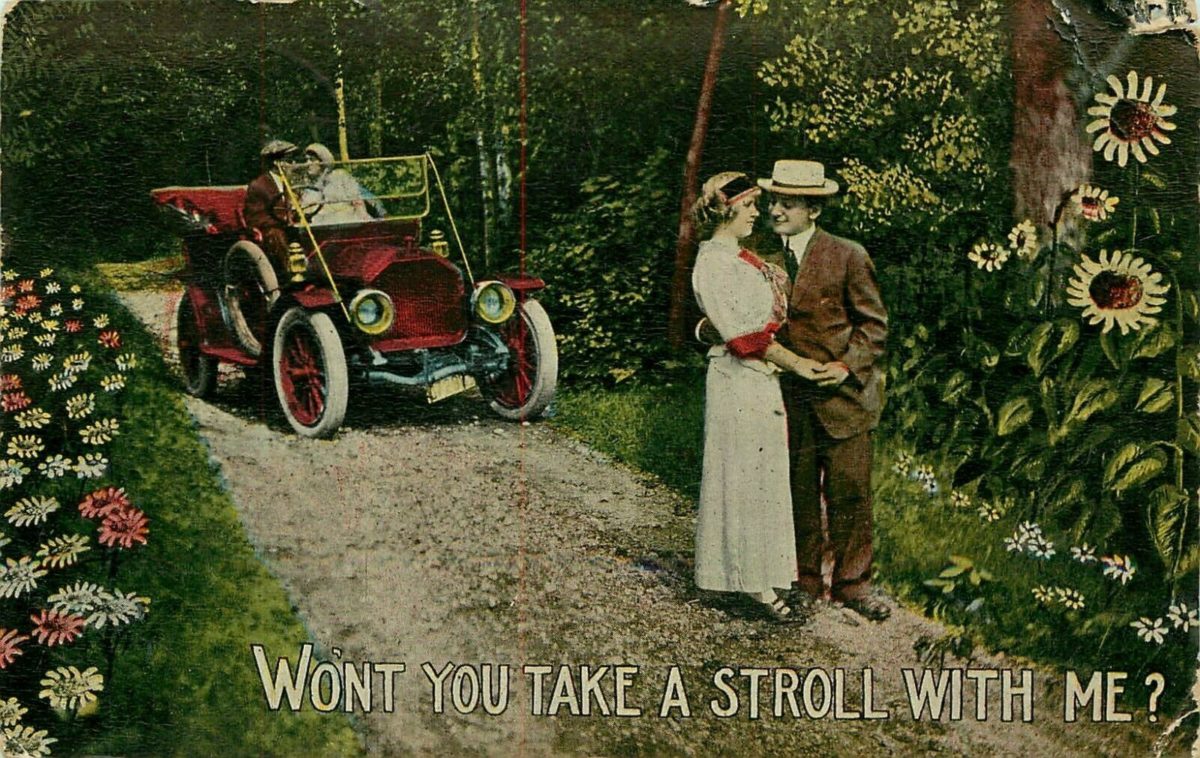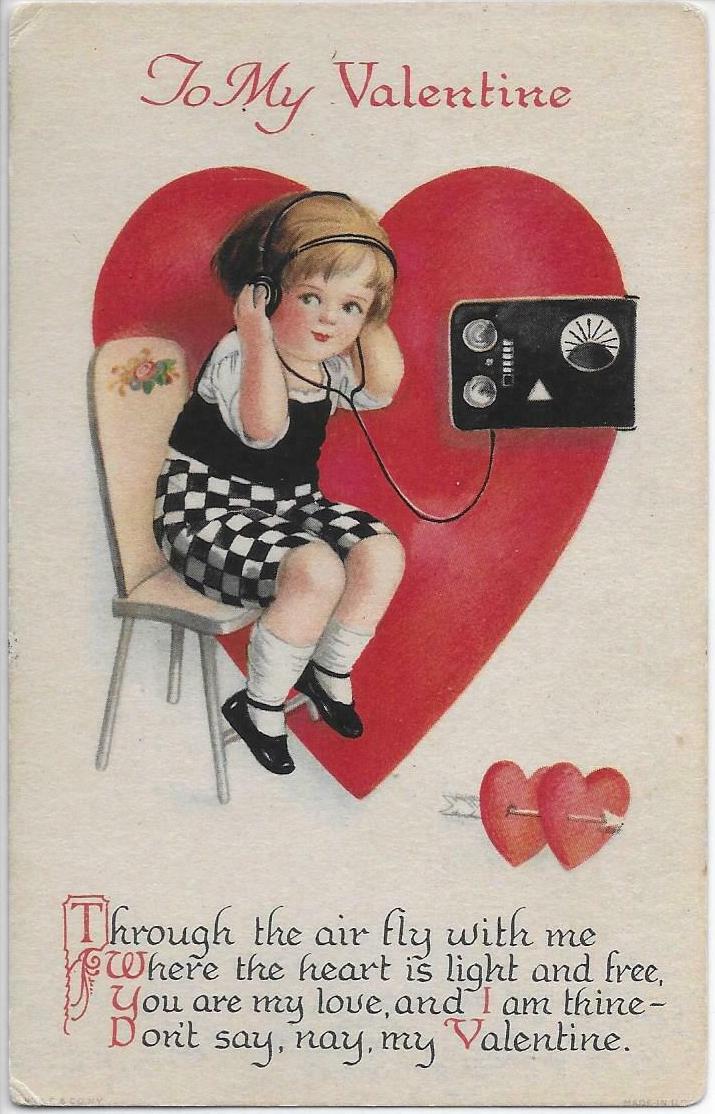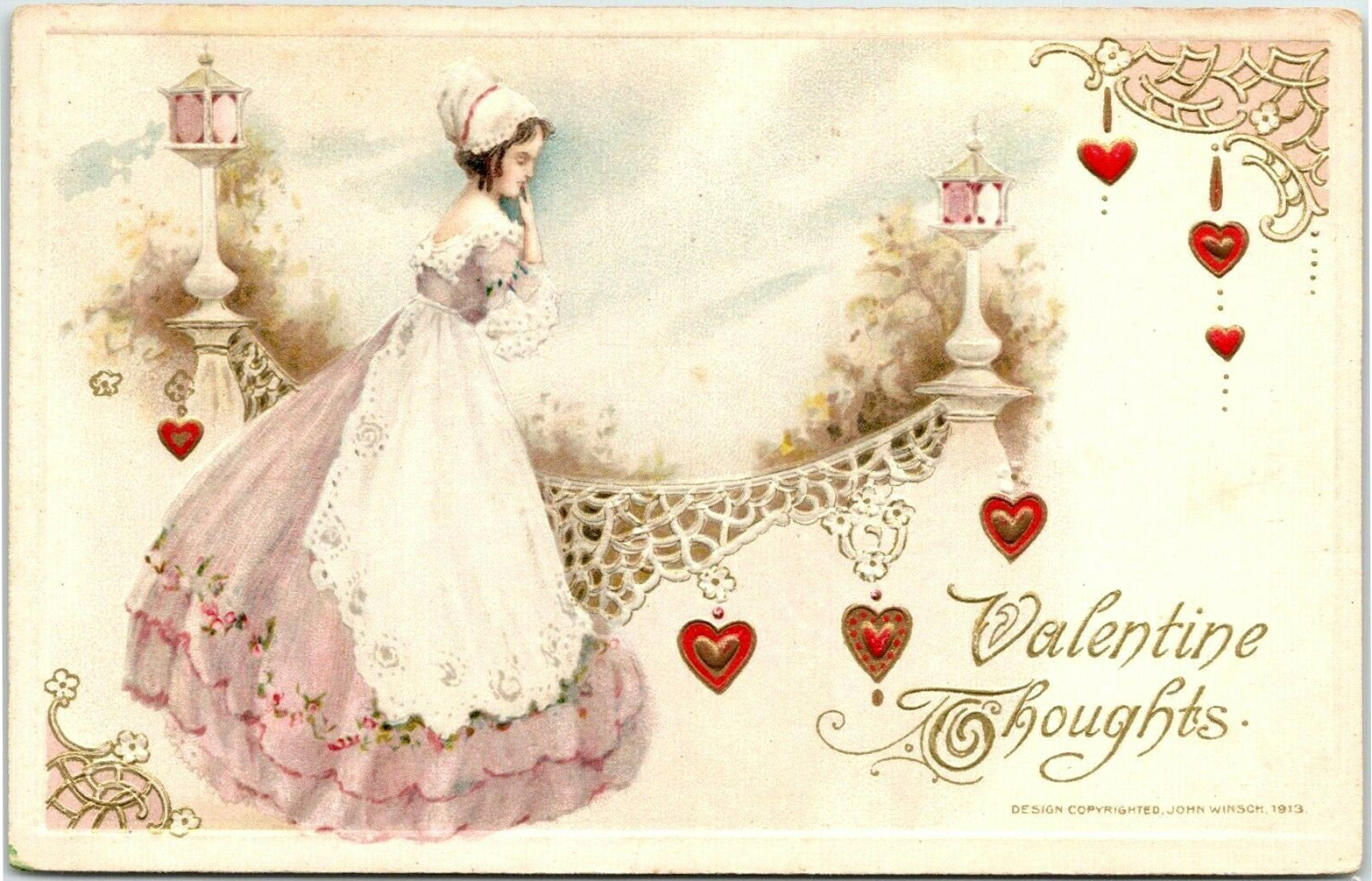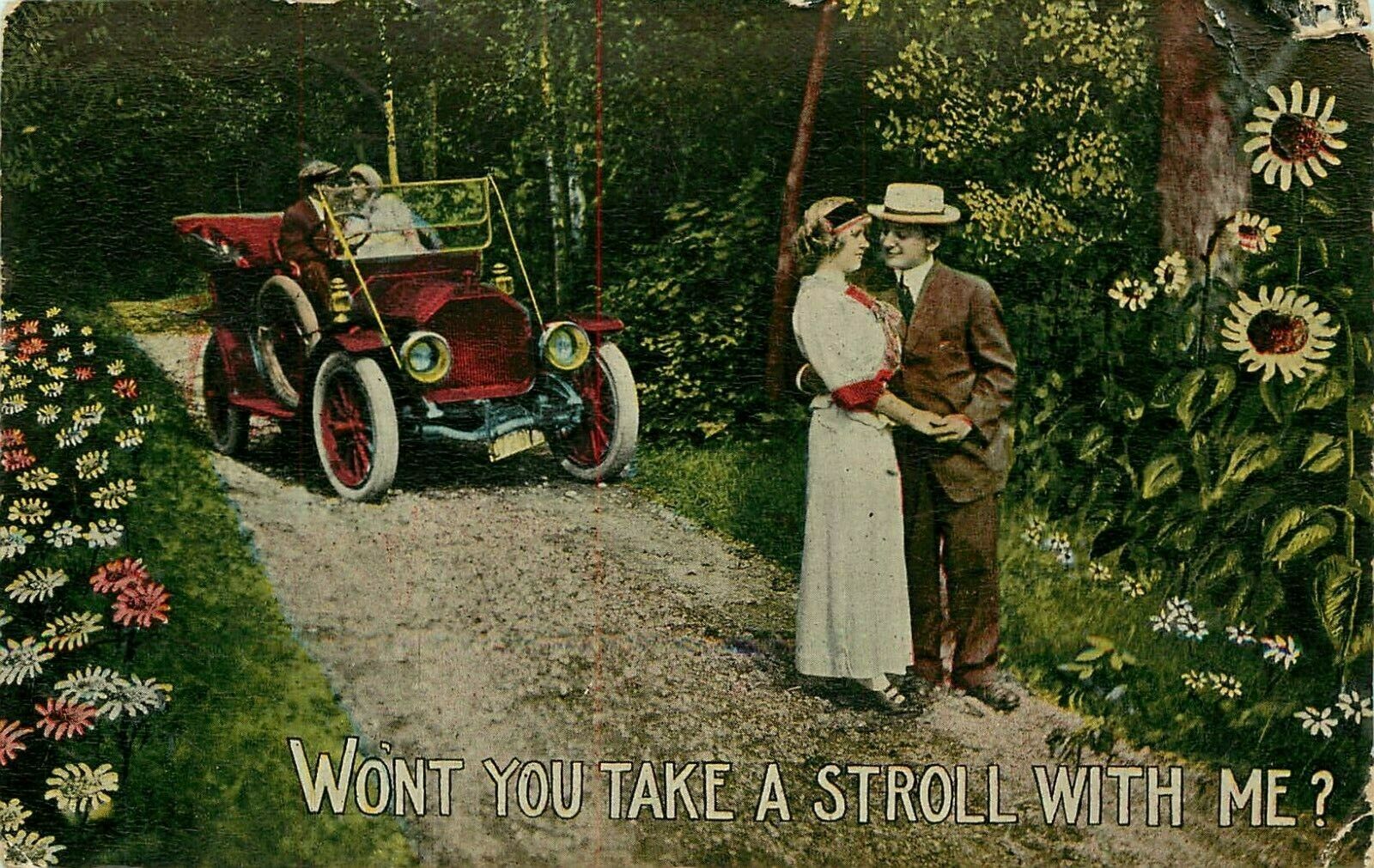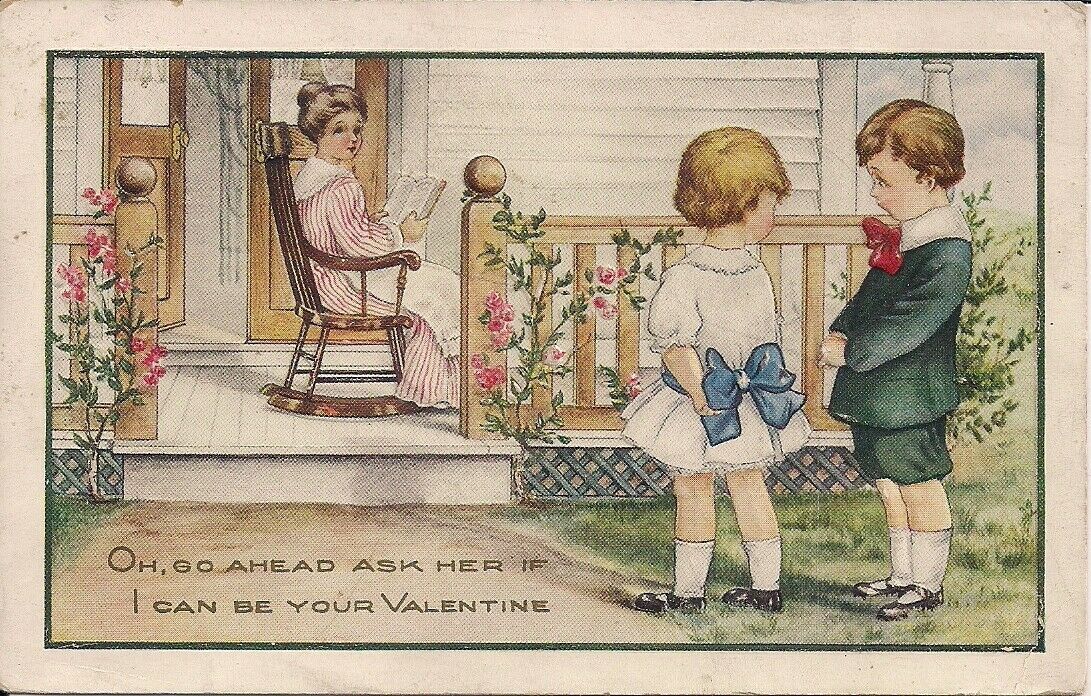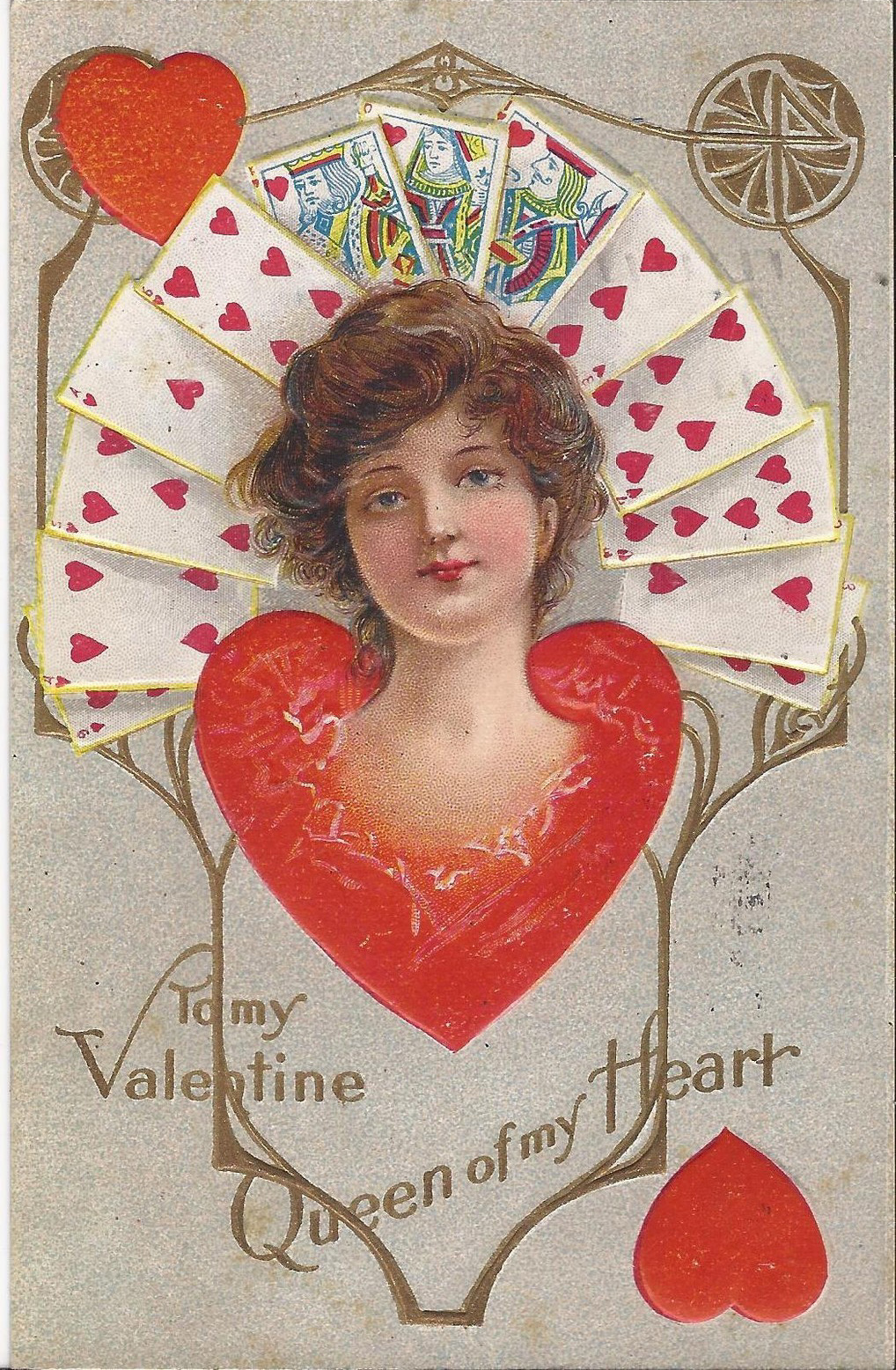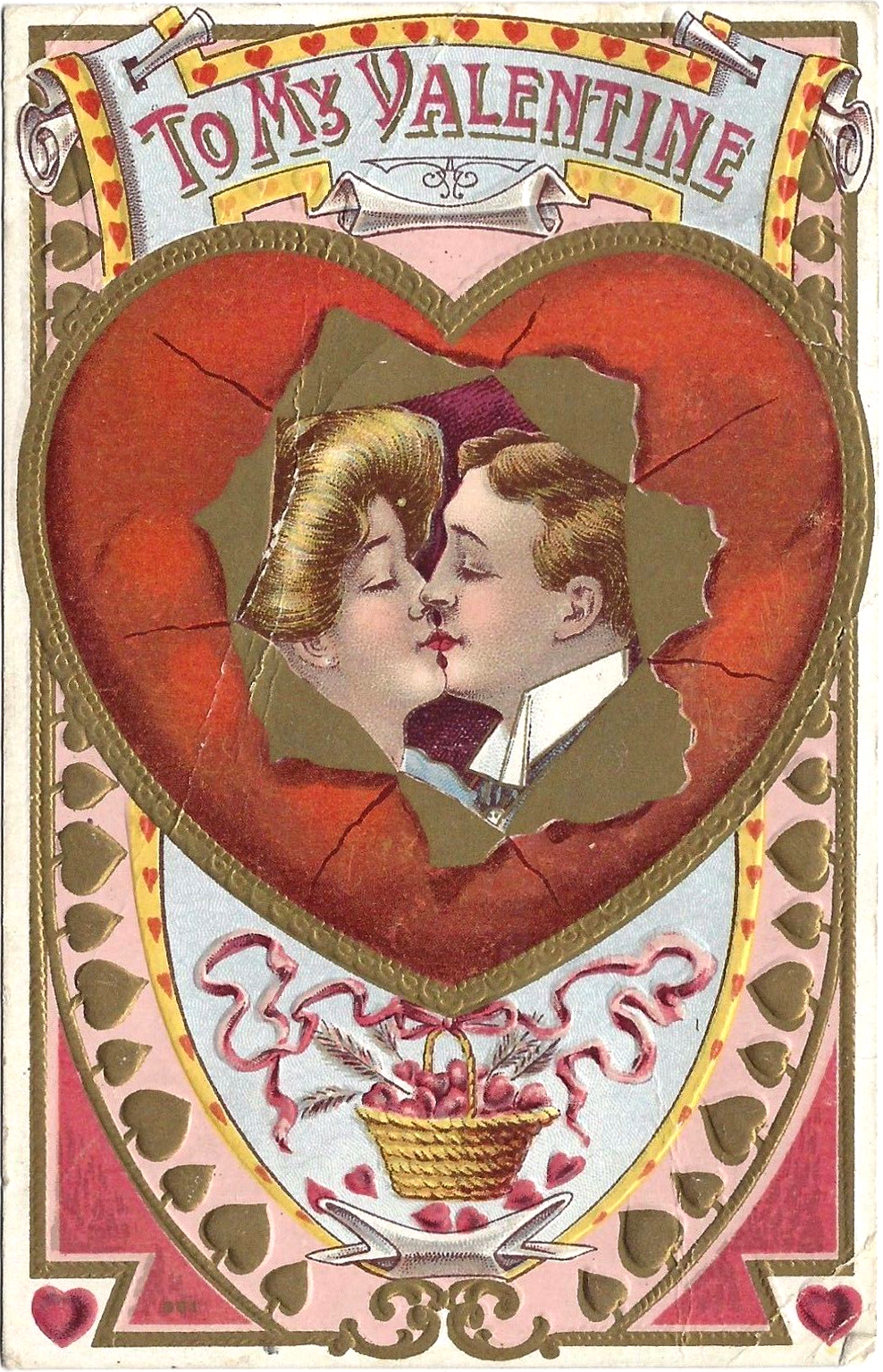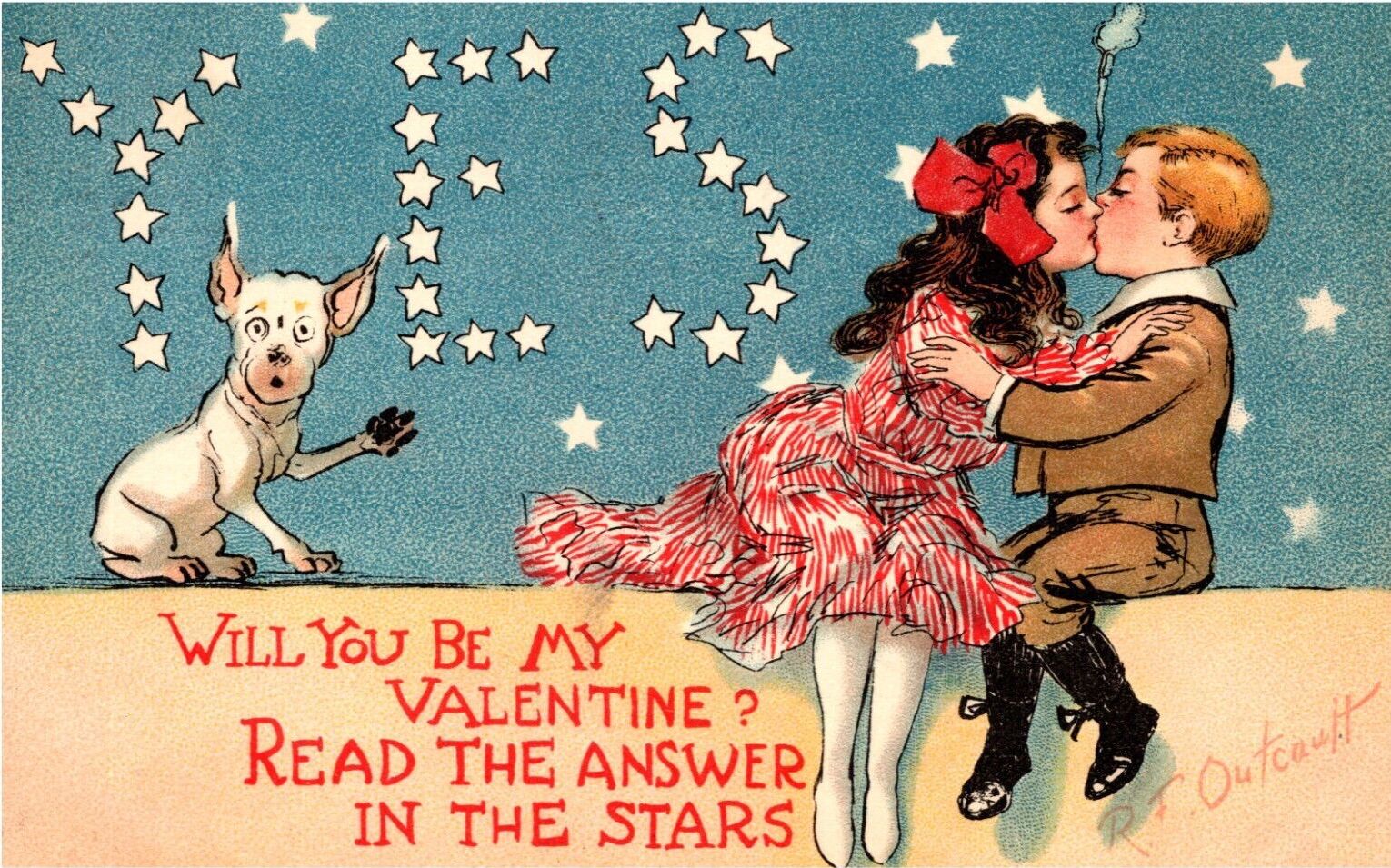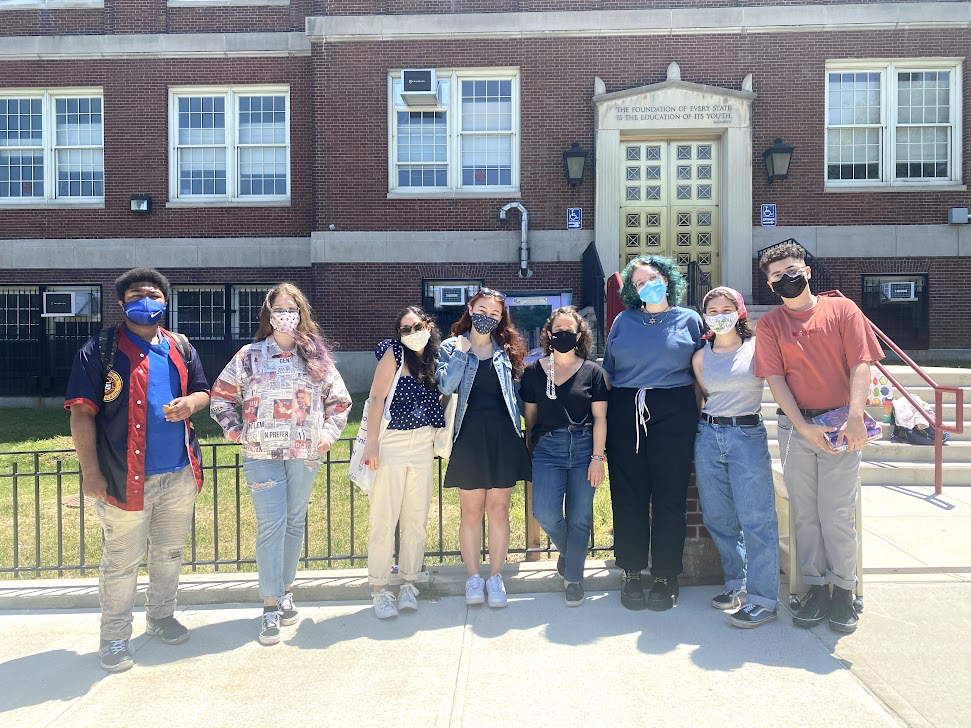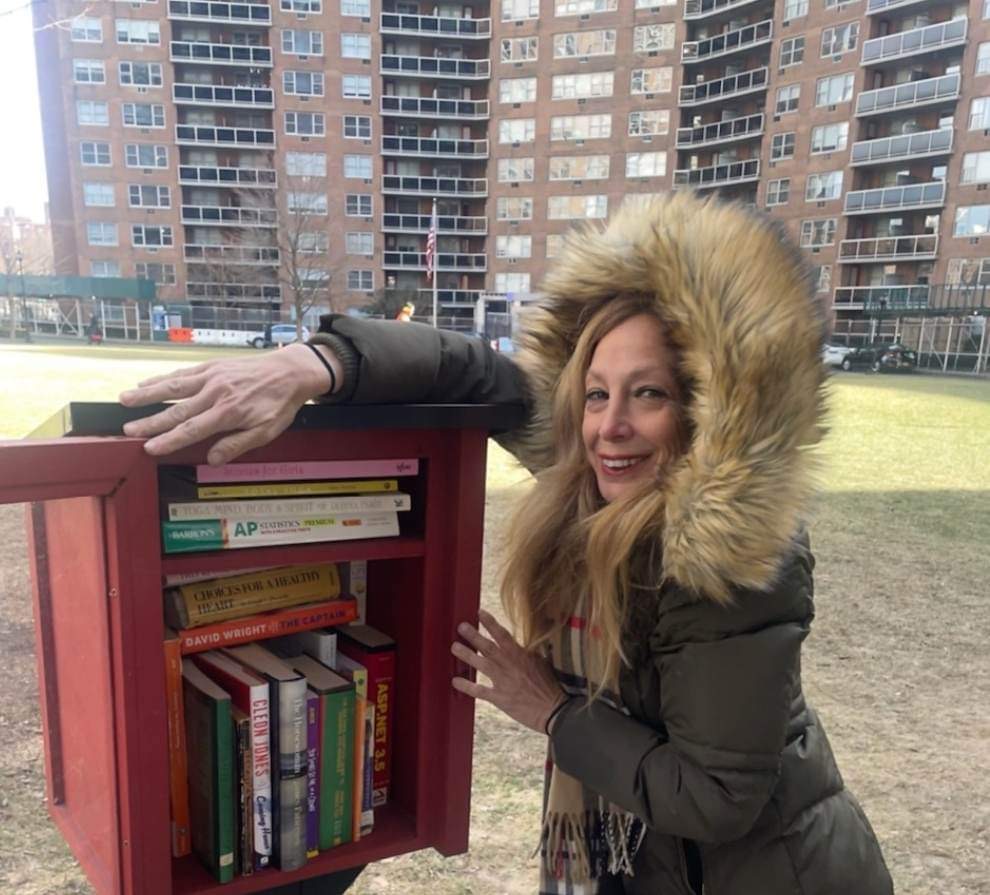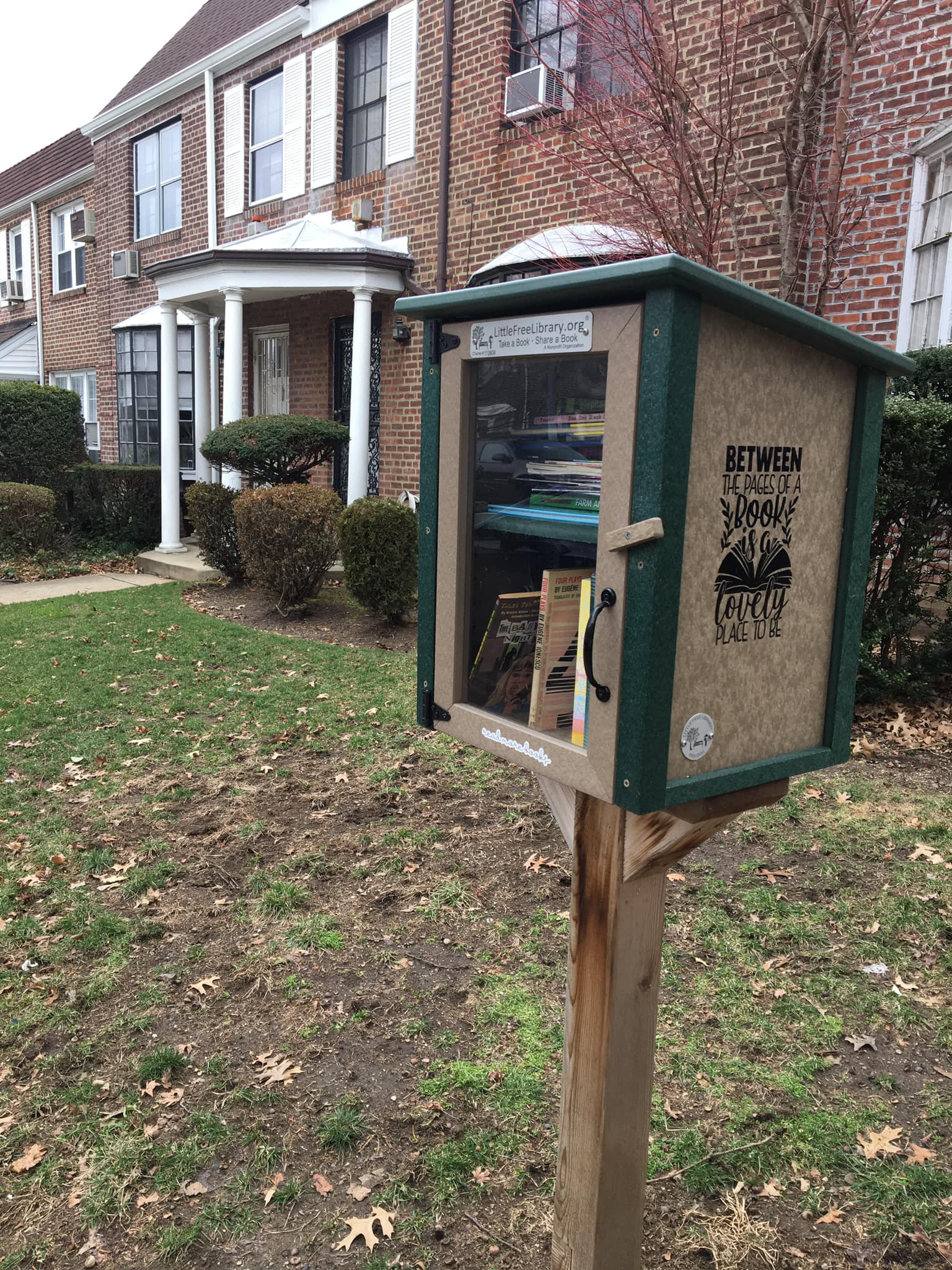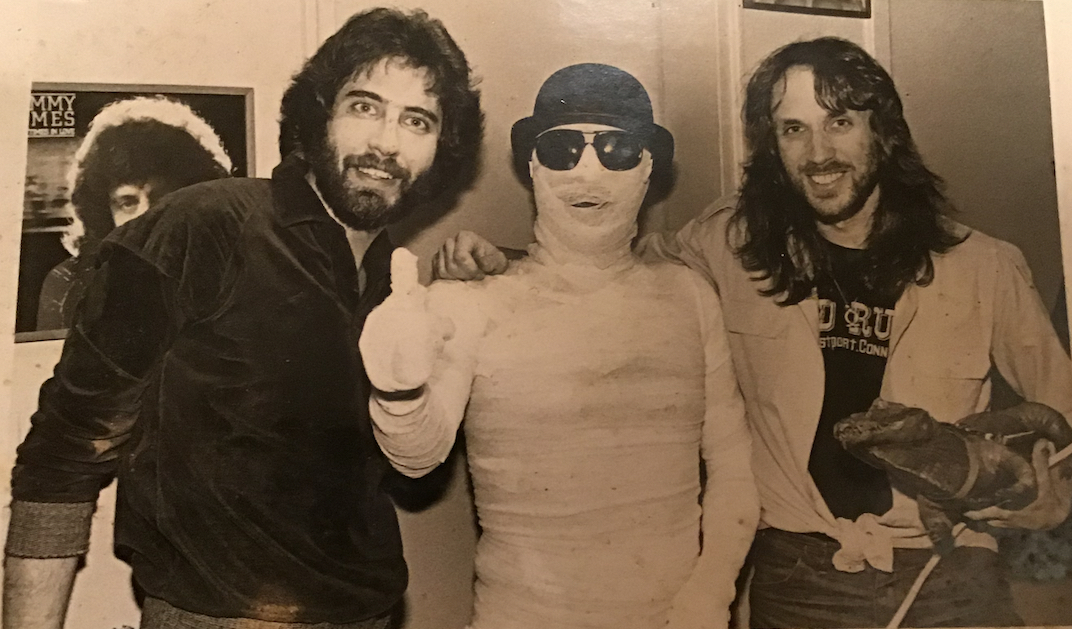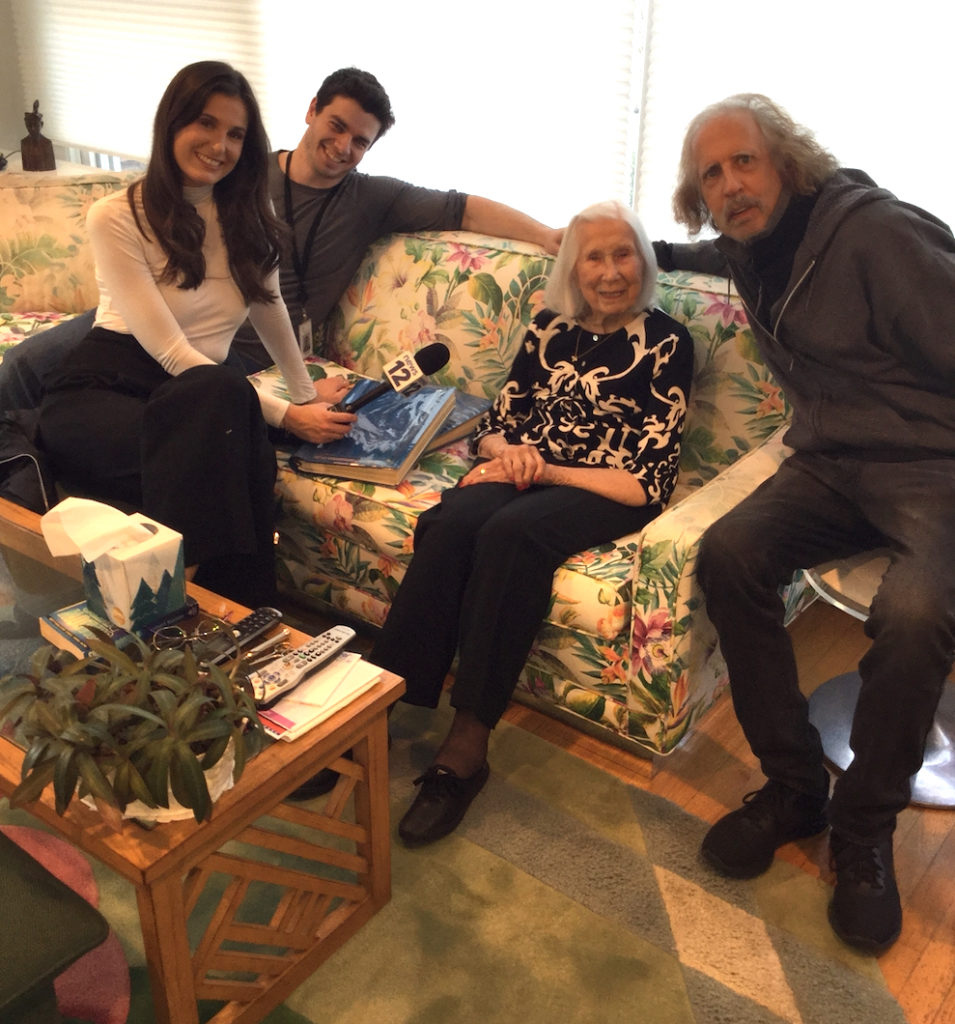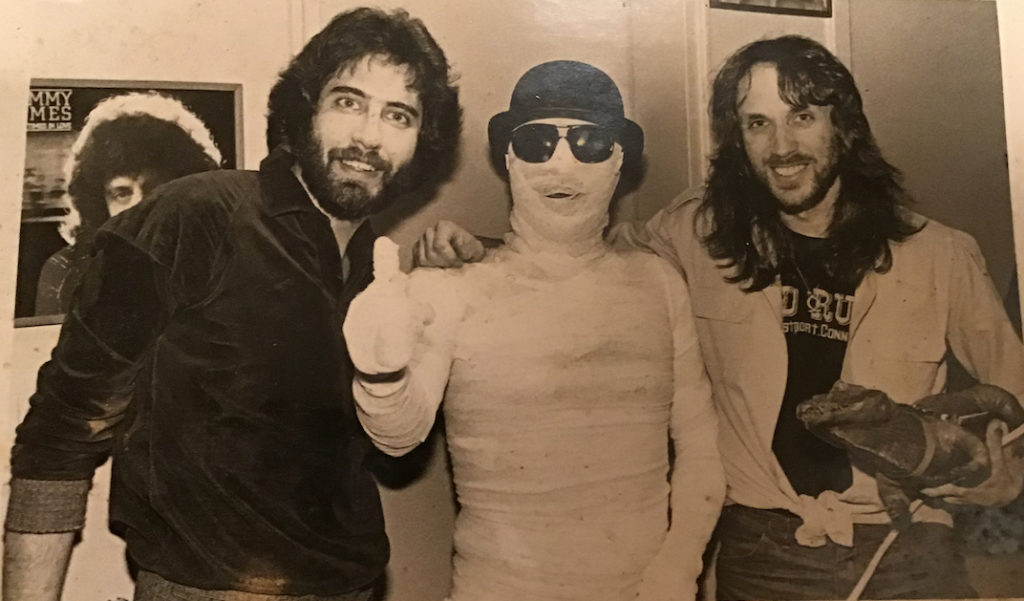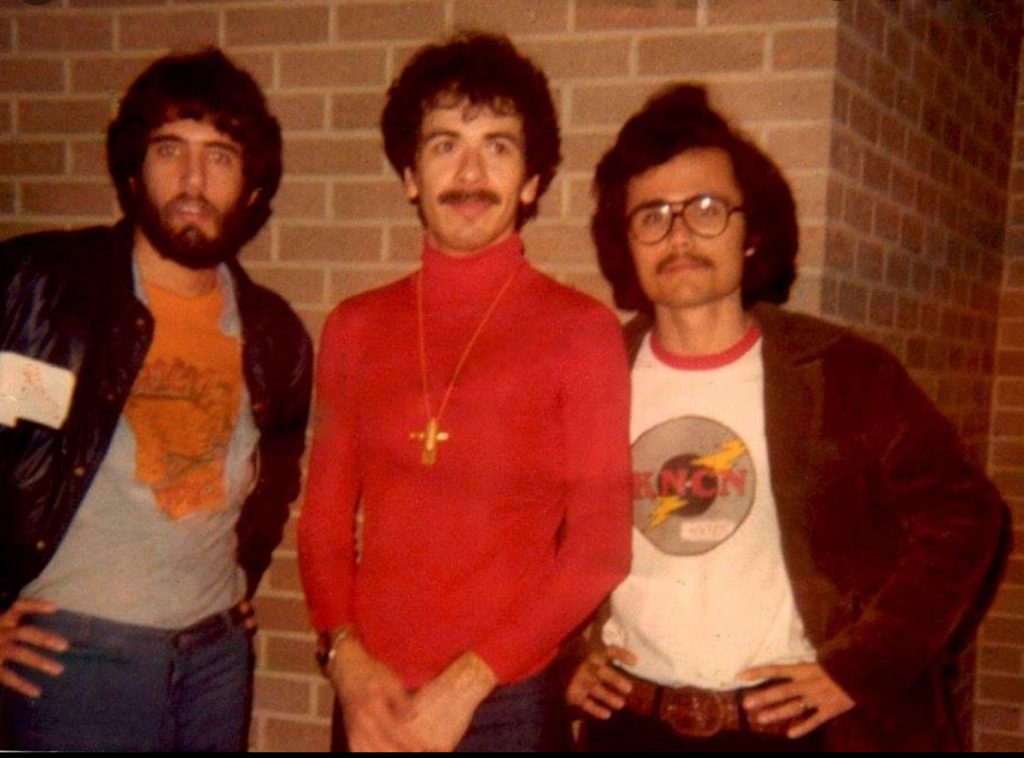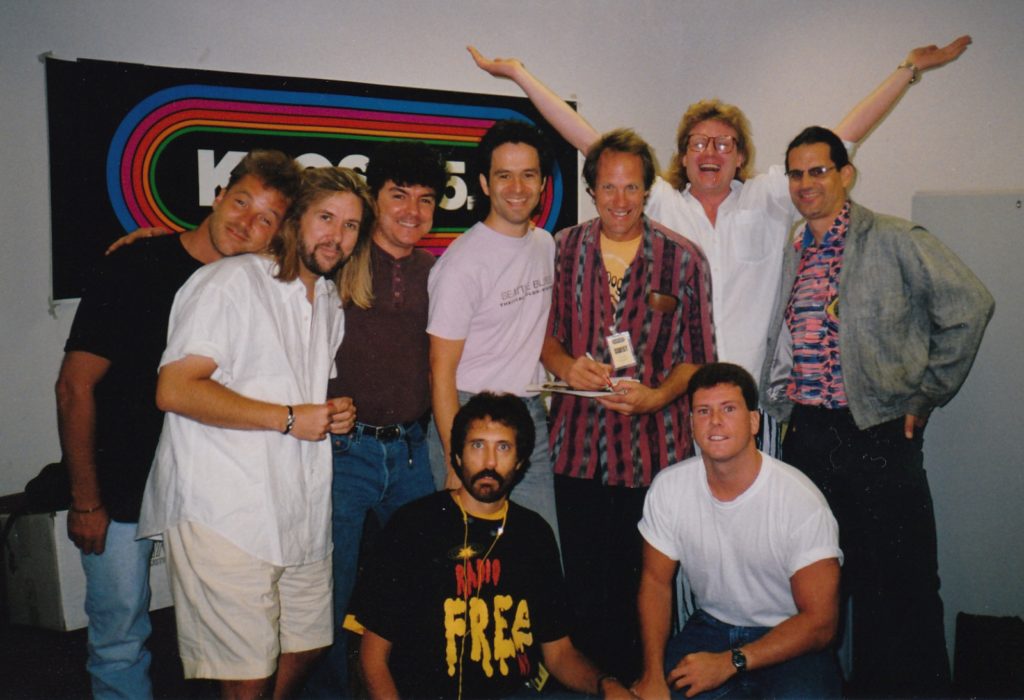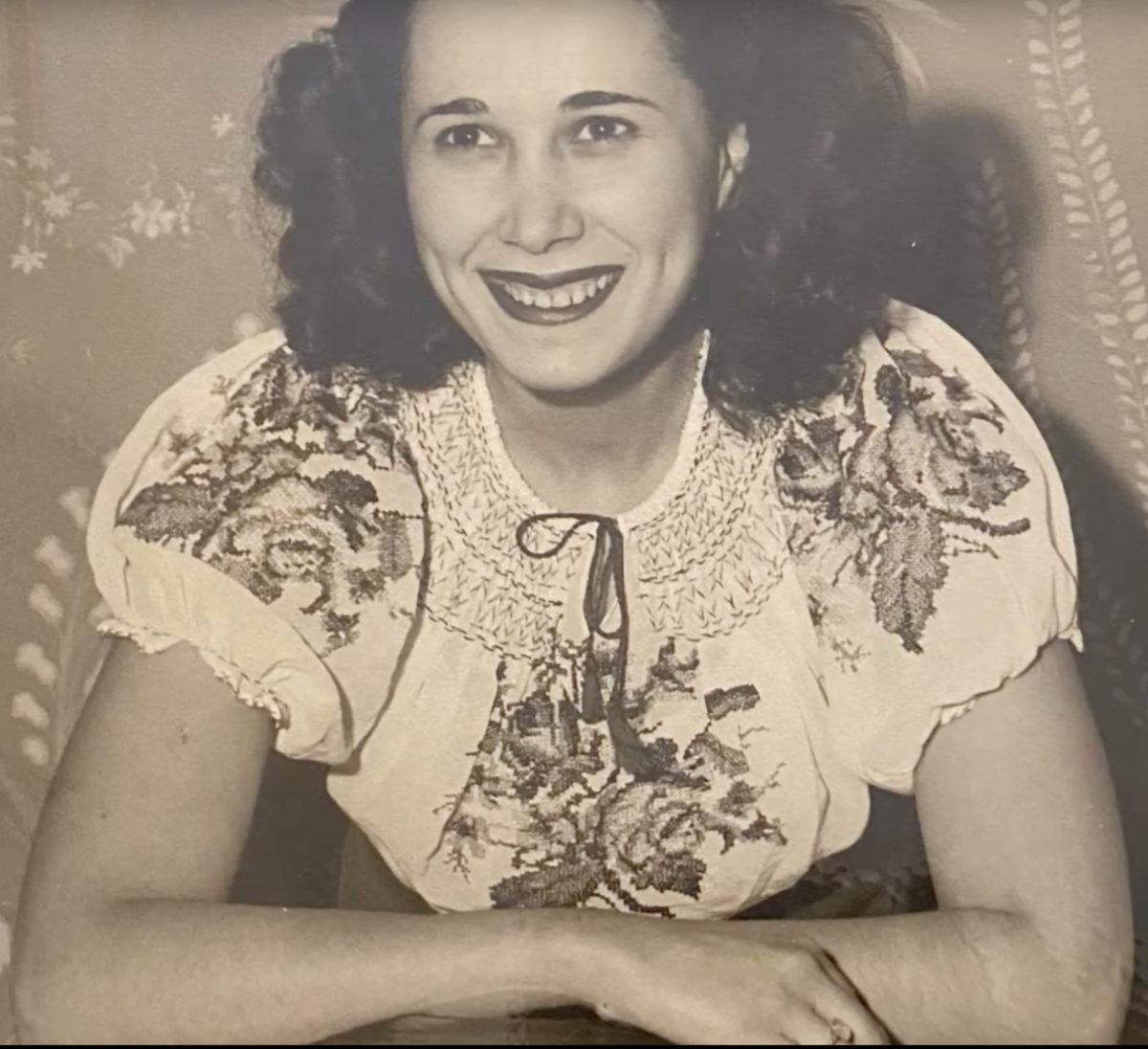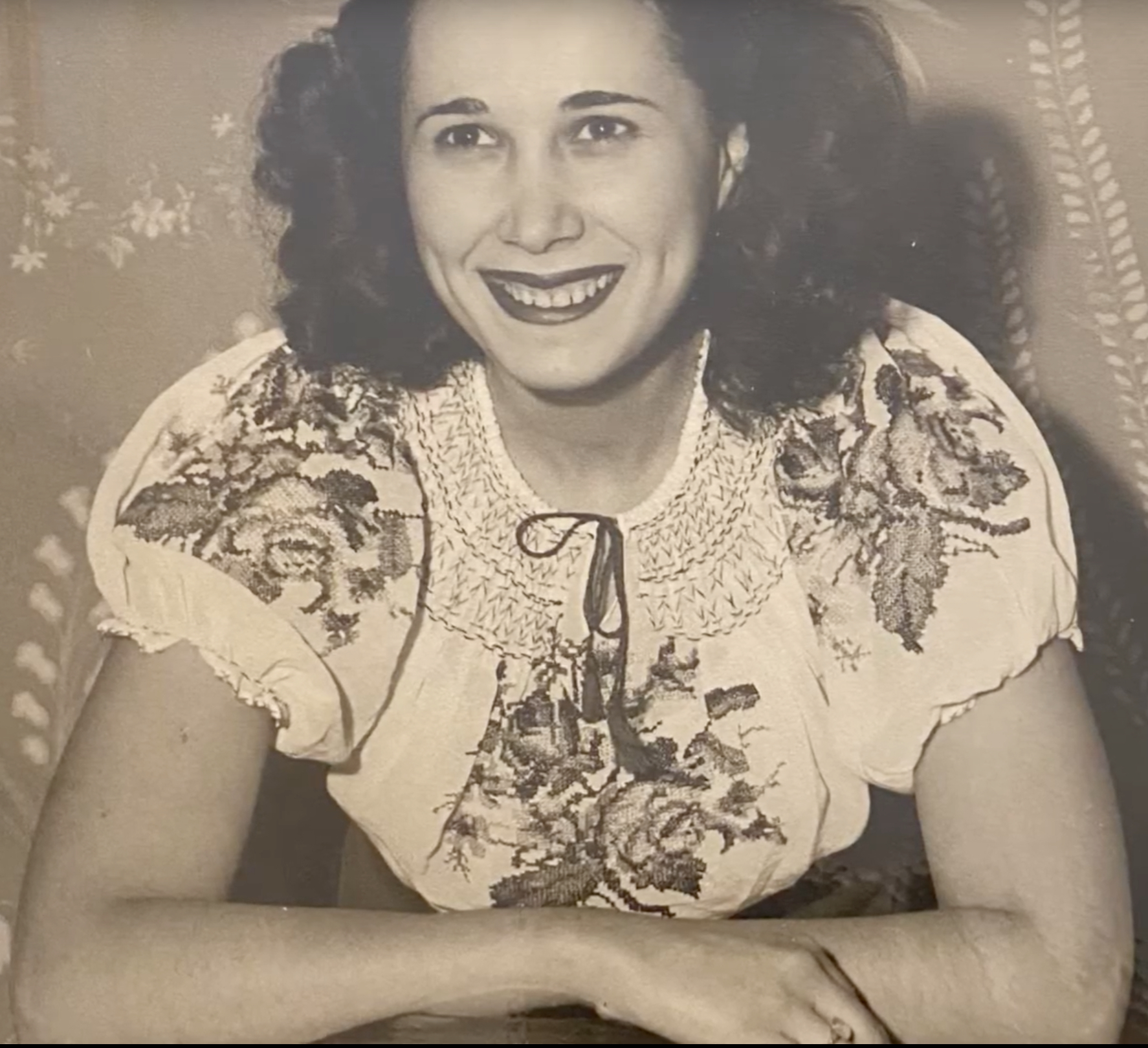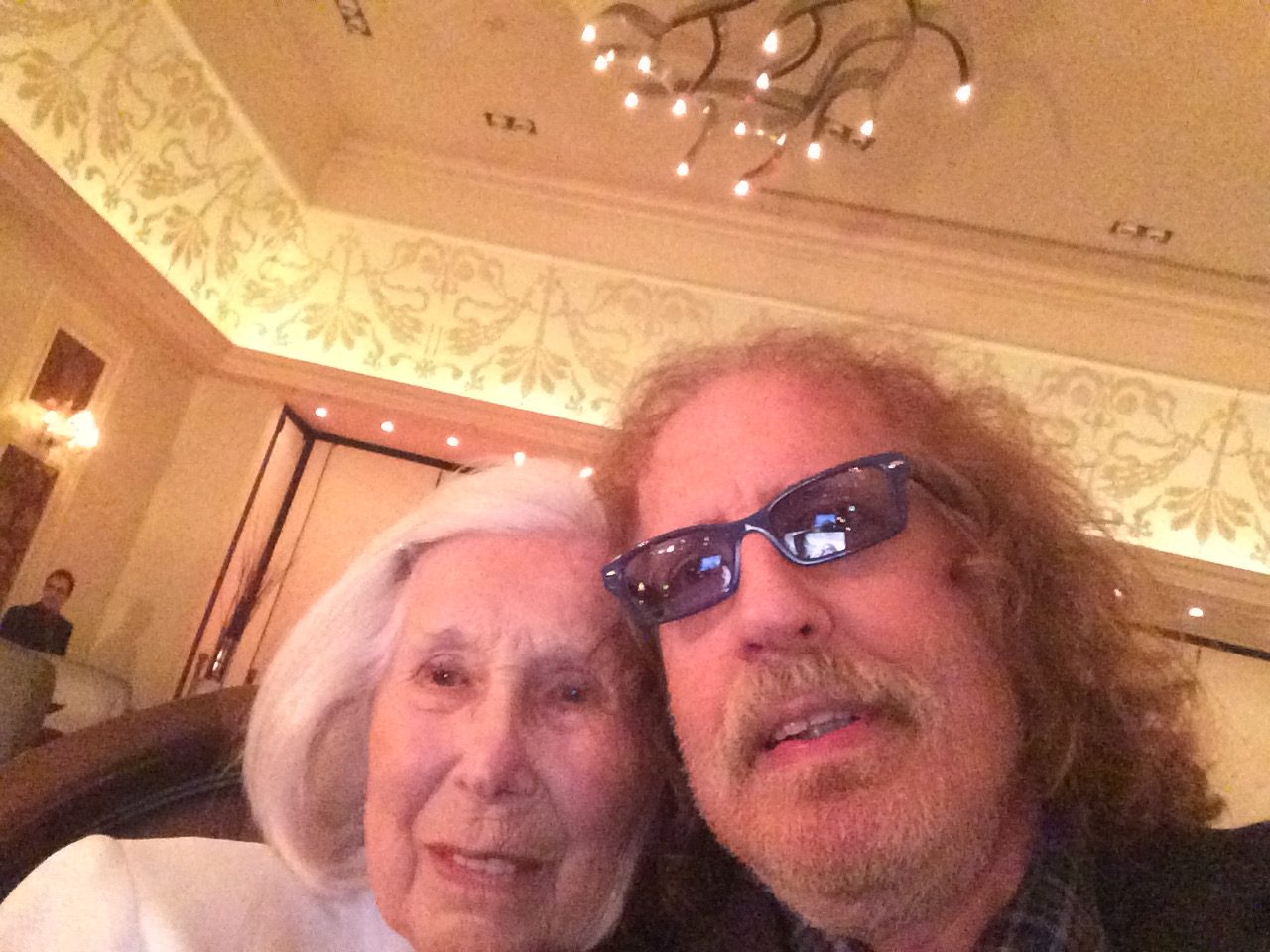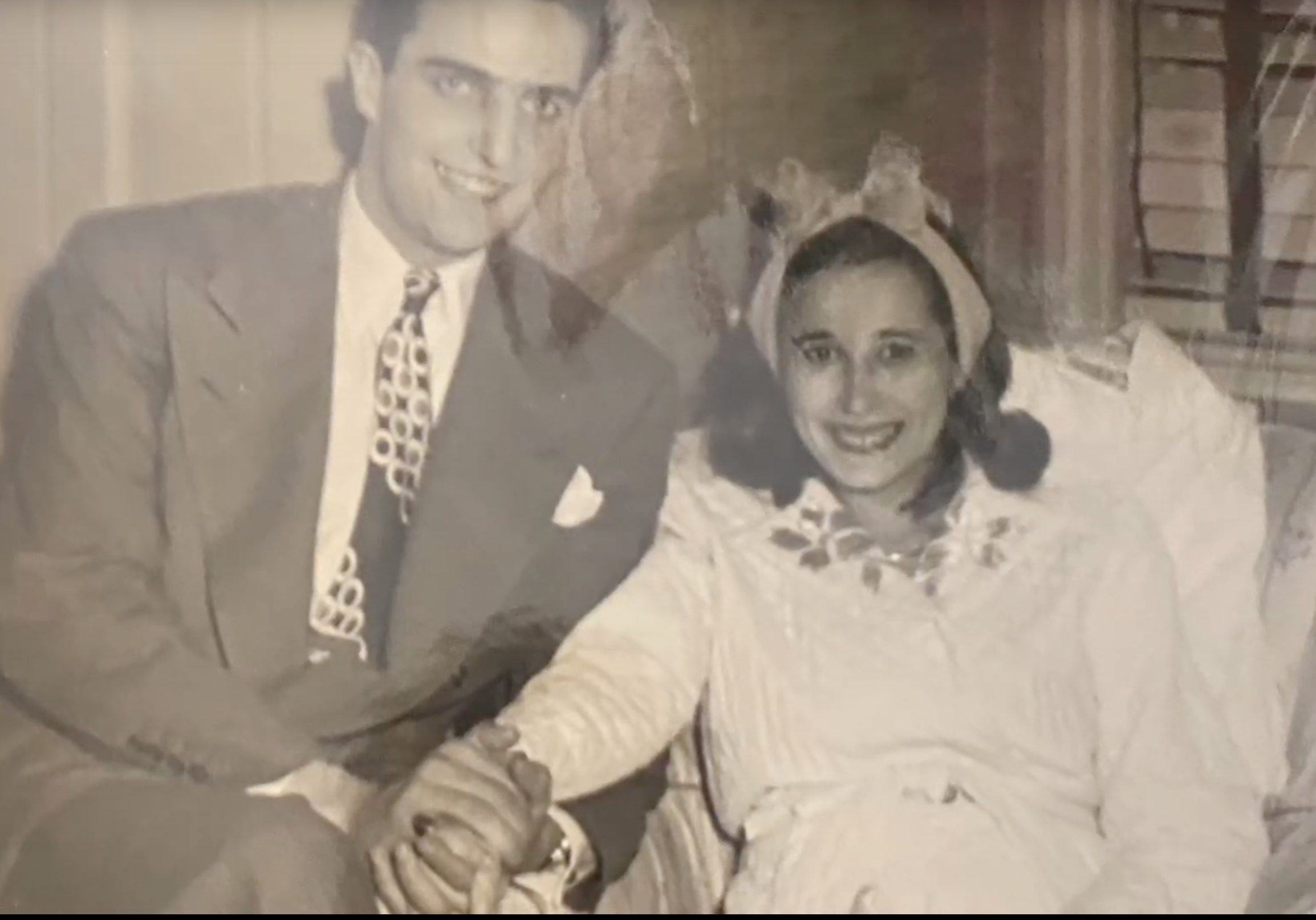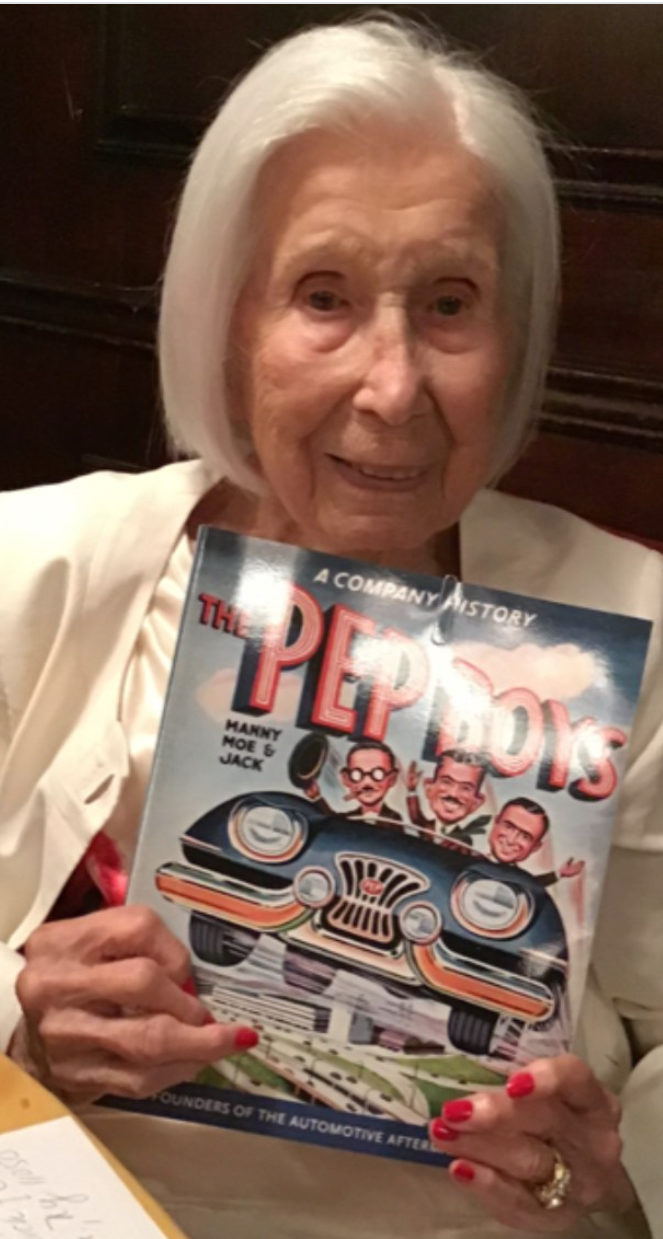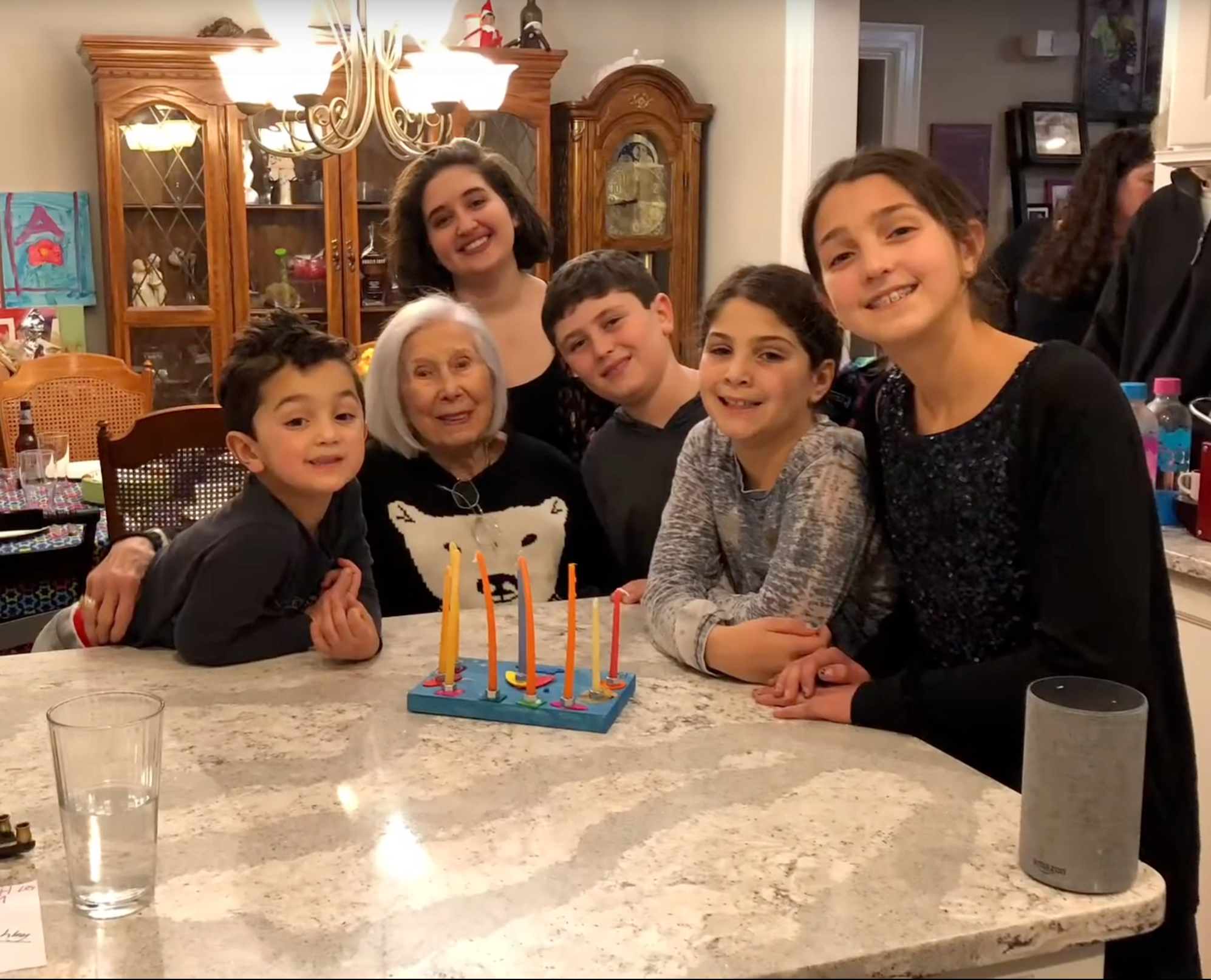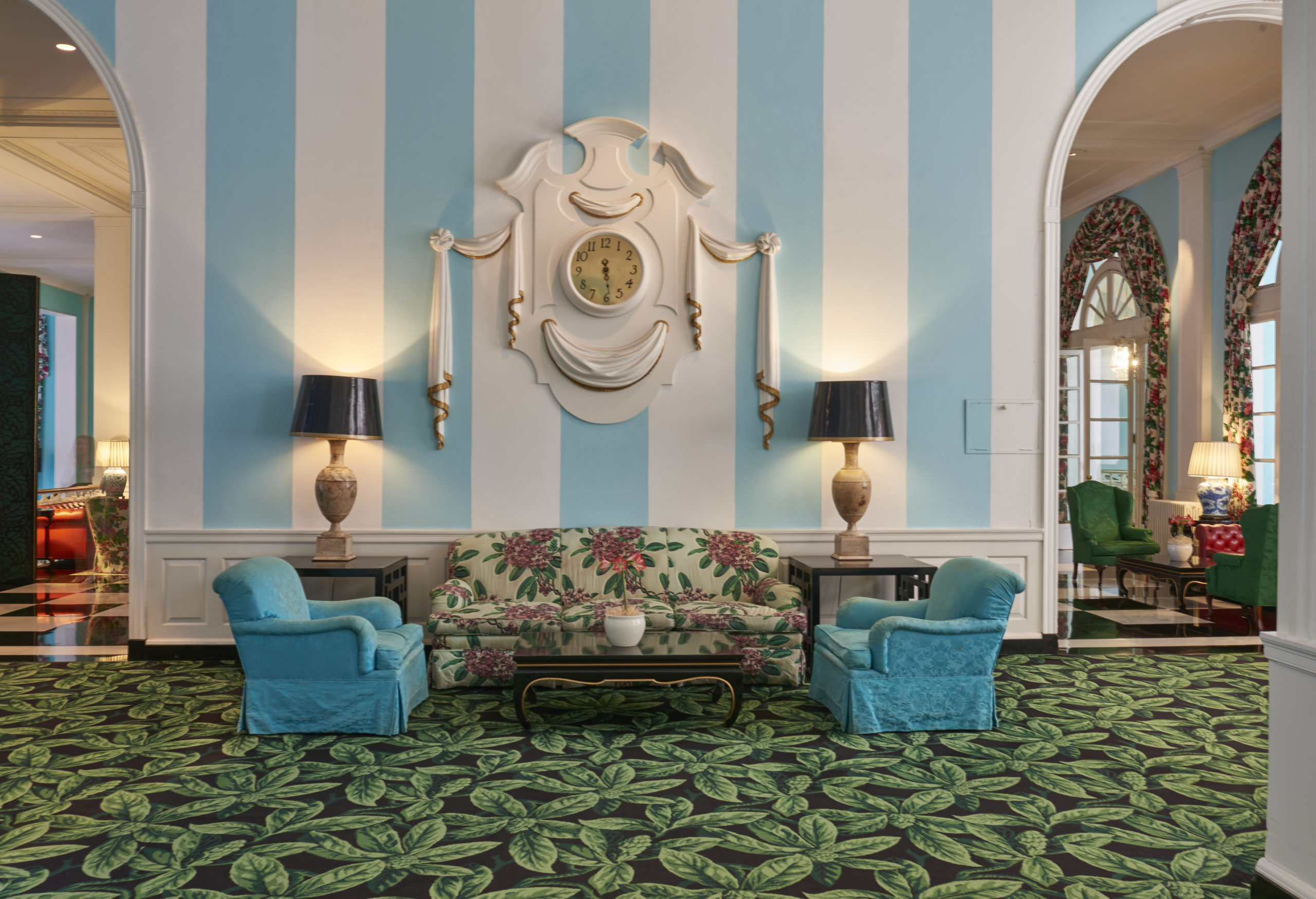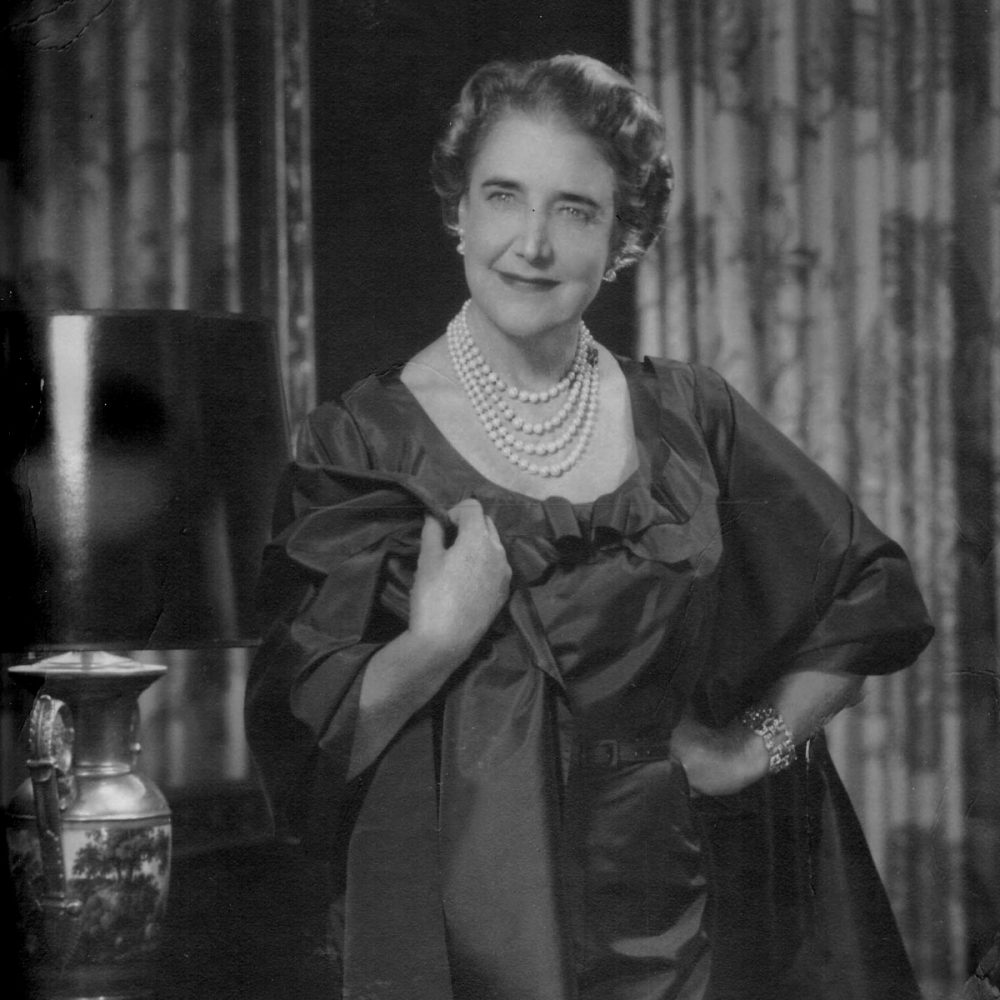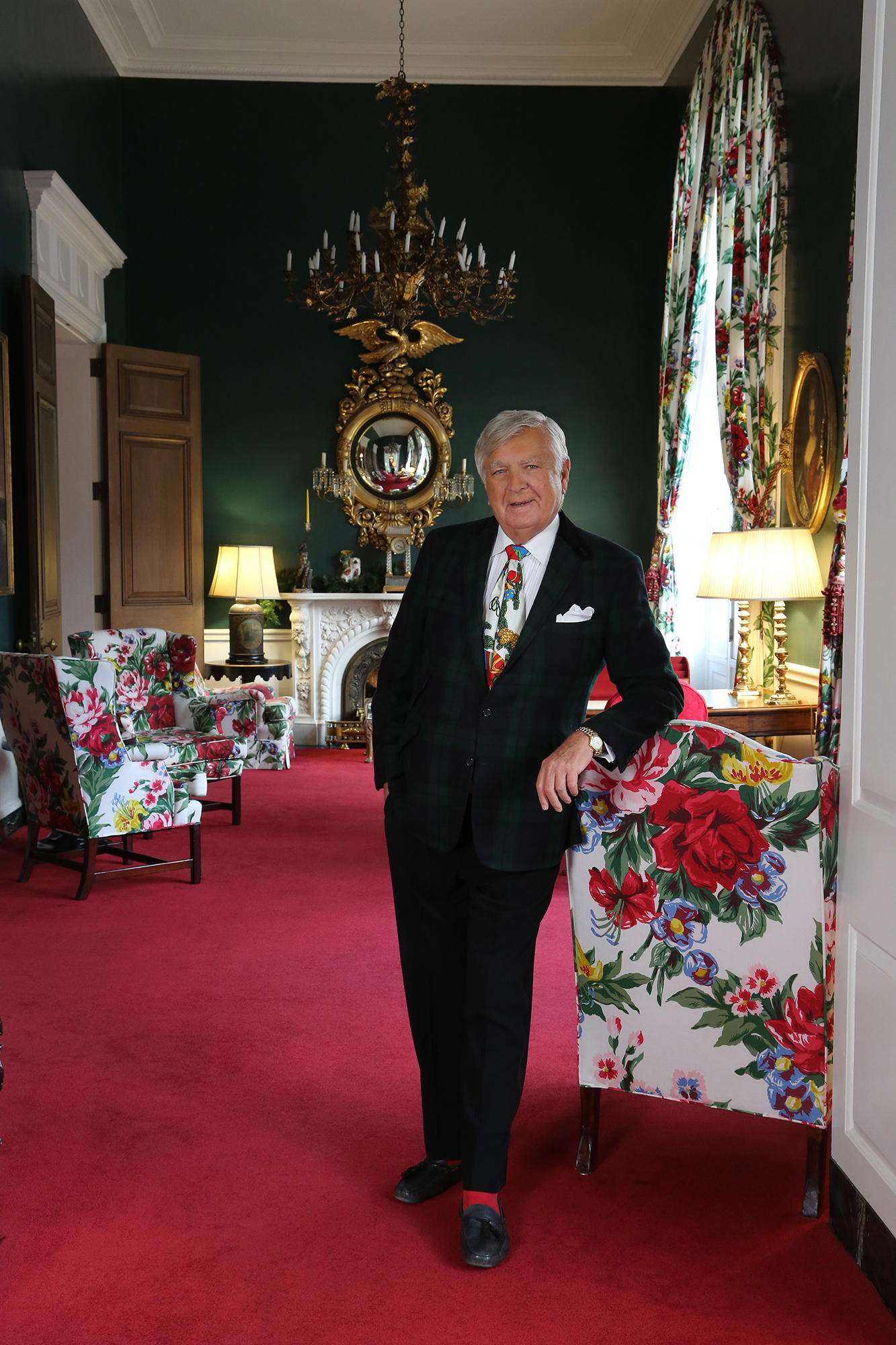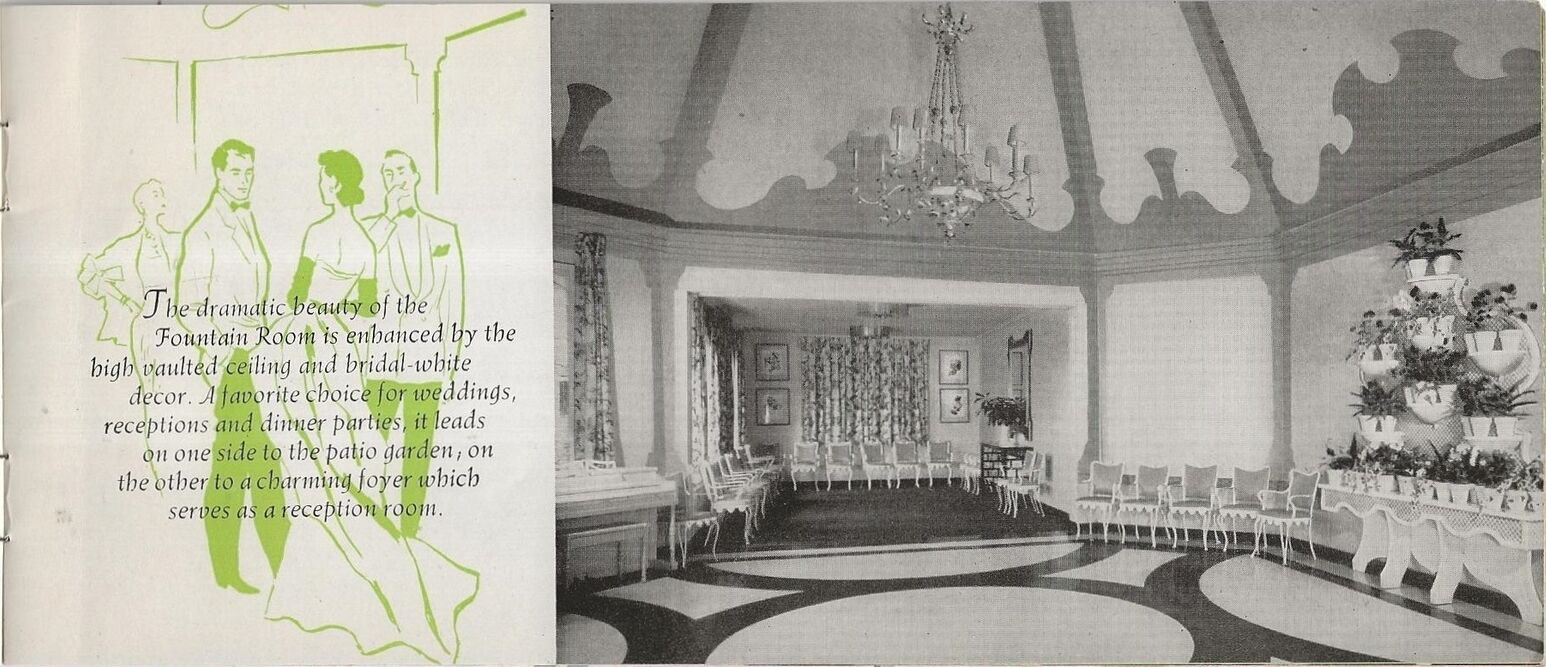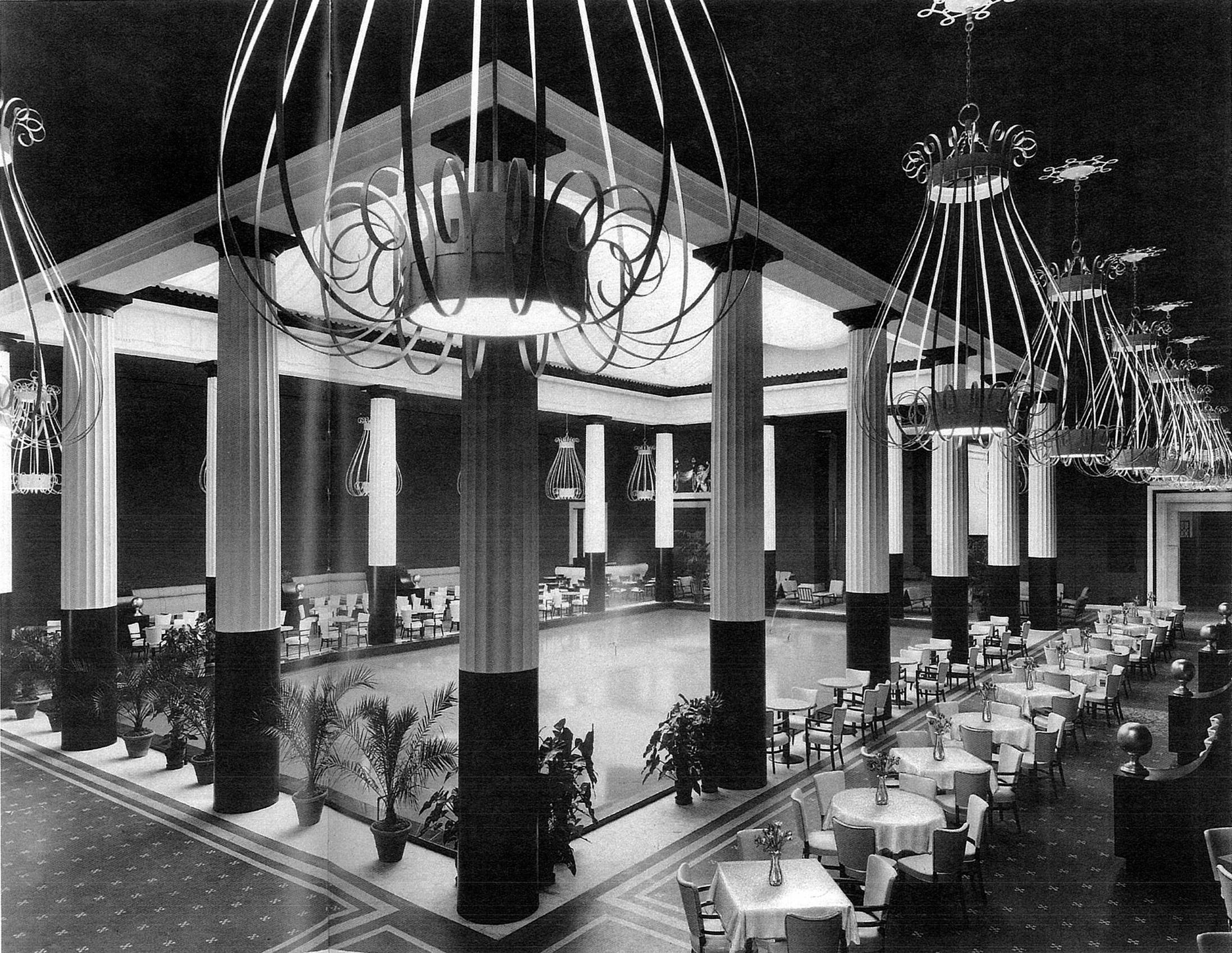The Eagles Fly Again at Forest Hills Stadium
By Michael Perlman | mperlman@queensledger.com
Every community has its mysteries, and one remains unsolved at the Stadium.
The two stone eagles that vanished at the base of the iconic Forest Hills Stadium seven decades ago have at last been closely replicated, but in steel with high-tech illumination, and made their way from Rio Rancho, New Mexico and installed.
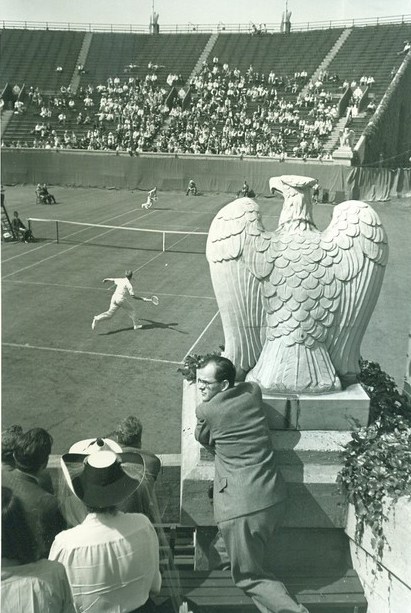
One of two long-gone stone eagles & Bill Tilden, 1937, Courtesy of Michael Perlman.
The eagles traversed nine states in their 2,000-mile drive before arriving in New York: New Mexico (where they were built), Texas, Oklahoma, Missouri, Indiana, Ohio, West Virginia, Pennsylvania and New Jersey.
Some people may say that the eagles flew in just in time for this summer’s centennial festivities at what was America’s first tennis stadium, later co-adapted into a concert venue and revitalized in 2013.
A sticker featuring an eagle sculpture and a centennial logo read “The Eagles Fly on Friday,” coincided with the unveiling of the two eagles on June 9 during the Dave Matthews Band concert. Their alternating colors formed a beat of their own, as a shoulder-to-shoulder audience danced the night away.
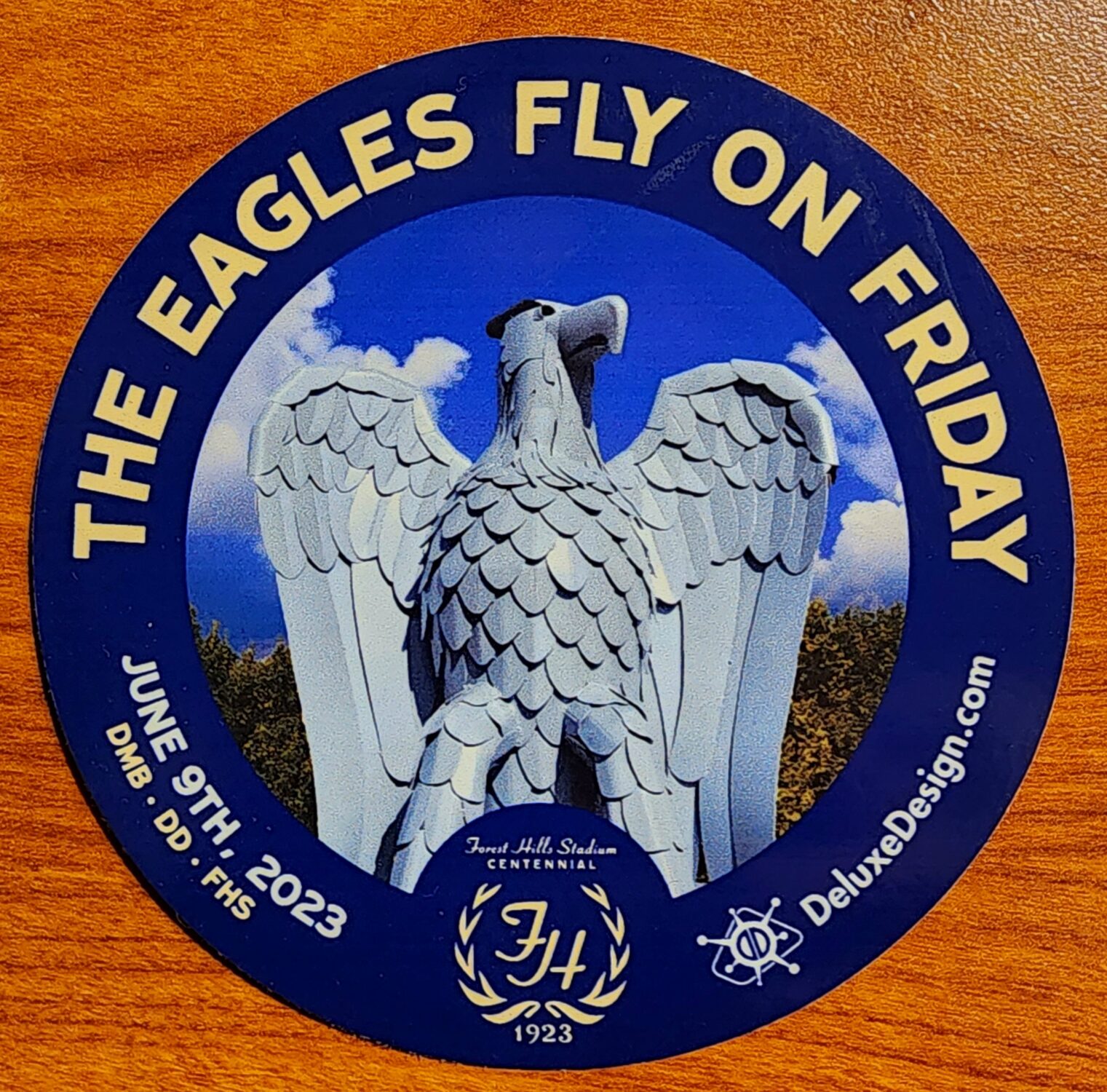
Eagles centennial sticker for Dave Matthews Band.
The archives at the West Side Tennis Club (WSTC) have been unable to determine why the original two stone eagles at far corners of the lower seat level were removed, or potentially where they were relocated to.
“Several eagles that decorated the classic Penn Station and Grand Central Station were rediscovered over the years, and the Archives Council hopes that will materialize at the Stadium,” said WSTC Archives Committee co-chair Bea Hunt. “From documents in the recently acquired Bud Collins Tennis Library and photos in the archives, we have been able to determine that the eagles were removed following the 1951 National Championships and before the 1952 Championships.”
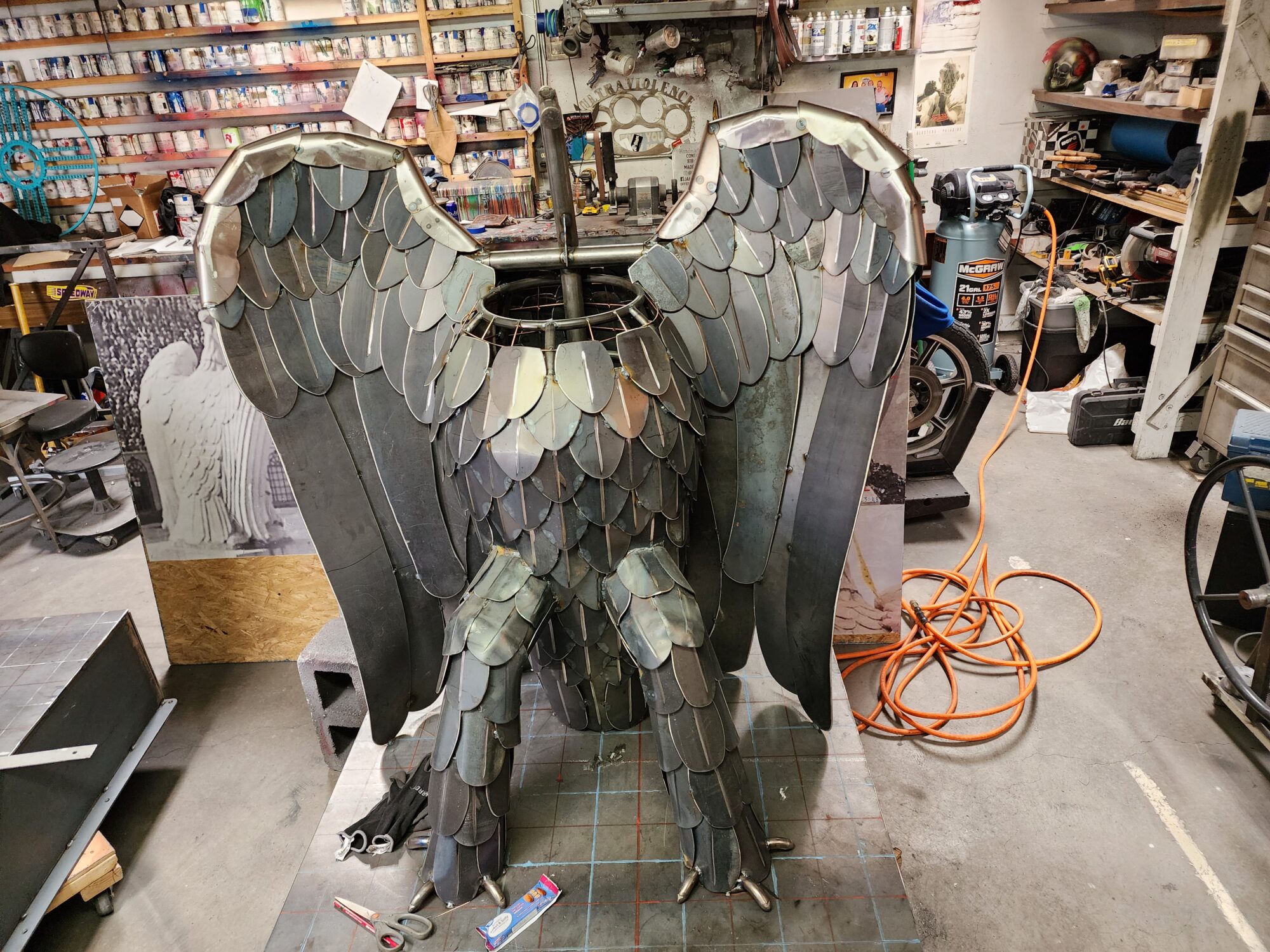
Behind the scenes, frame & feathers.
Some history buffs speculated that Alfred Hitchcock’s filming of “Strangers on a Train” during the 1950 Davis Cup cast a spell on them.
Some materials indicate that the stone eagles surrounding the upper perimeter of the Stadium are original from 1923. “One and possibly more eagles have been reconstructed over the years. The one we know of is from 1950, when Althea Gibson was playing,” said Hunt.
Additional research is underway, but as for the original stone eagles, if any longtime WSTC members or the public can pinpoint their whereabouts and reason for removal, the Archives Council is all ears: archives@thewestsidetennisclub.com
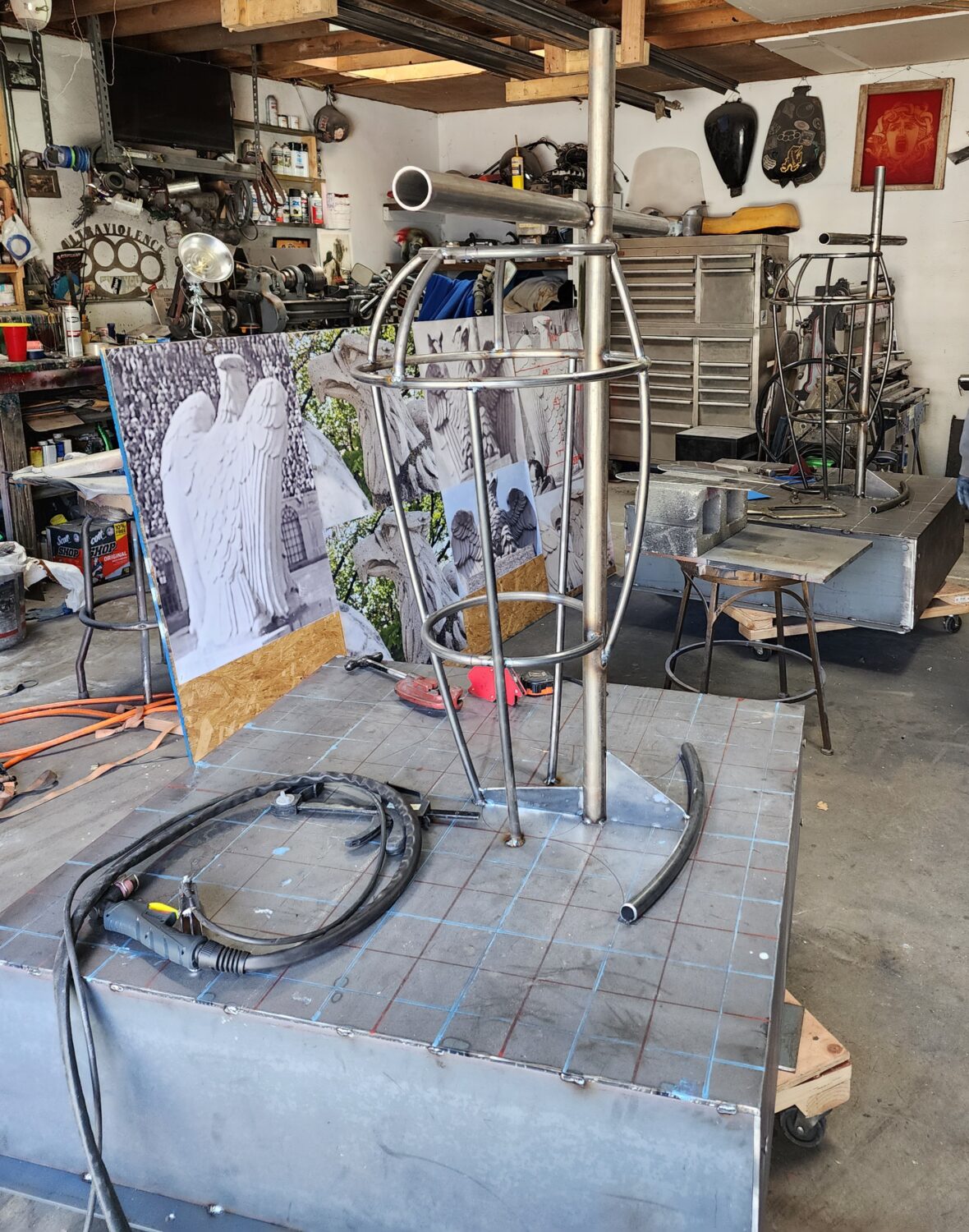
Erecting a frame alongside historic Eagle prints.
Now it’s time to step behind the scenes and embark on a journey of the nearly replicated two eagles, which are now designed in steel. Norman C. Ruth is Vice President of Deluxe Design, Inc, who collaborated with sculptor Jake Smith.
“The mystery behind the original eagles is fantastic,” said Ruth.
Since the first efforts were made to restore and reinvent Forest Hills Stadium as a viable concert venue, Deluxe Design has been on scene.
“Our firm alongside the Stadium team and creative director Bill Sullivan, pushed the envelope in exploring, designing, and manufacturing the branded signage. Now our involvement in the eagle project has truly been an honor that we hold close to us, and we choose to elevate every aspect of the project,” said Ruth.
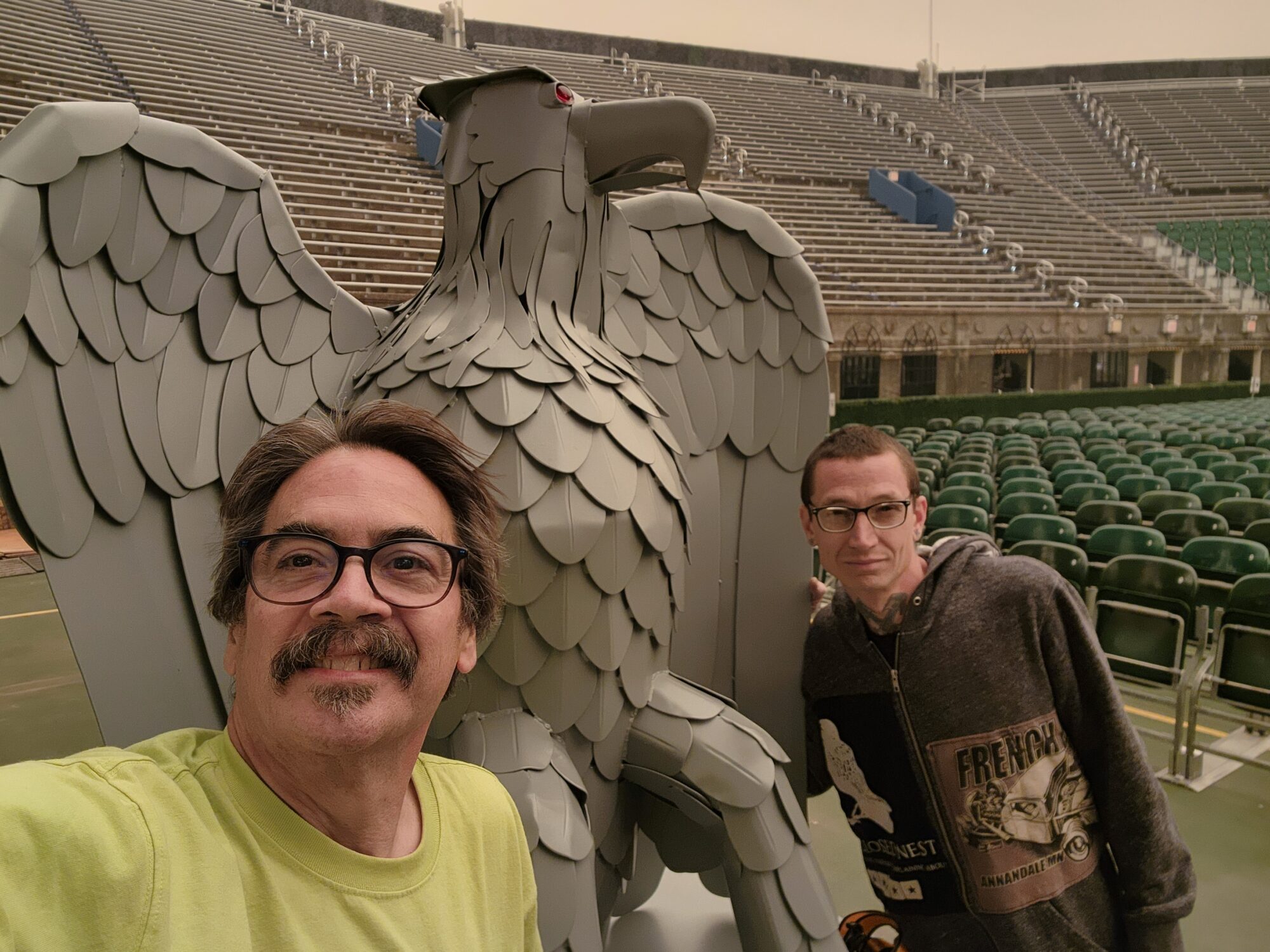
Norm Ruth & Jake Smith
“I am honored and couldn’t be prouder that my work is part of the living history that is Forest Hills Stadium,” said Smith.
Ruth feels historic preservation is essential. “Our history as a creative society has been, and continues to be erased by the next real estate project such as a strip mall, but our commitment to the future must be to also preserve the past,” he said. As for Smith, he considers preservation as imperative for maintaining and evolving the cultural values that reflect communities. “In the case of a stadium like Forest Hills, preservation is also an opportunity to build community through shared experiences and traditions,” he continued.
As American society all too often pitches a throwaway culture, Smith speculates that one or both eagles were likely damaged and presumably sent to a landfill.
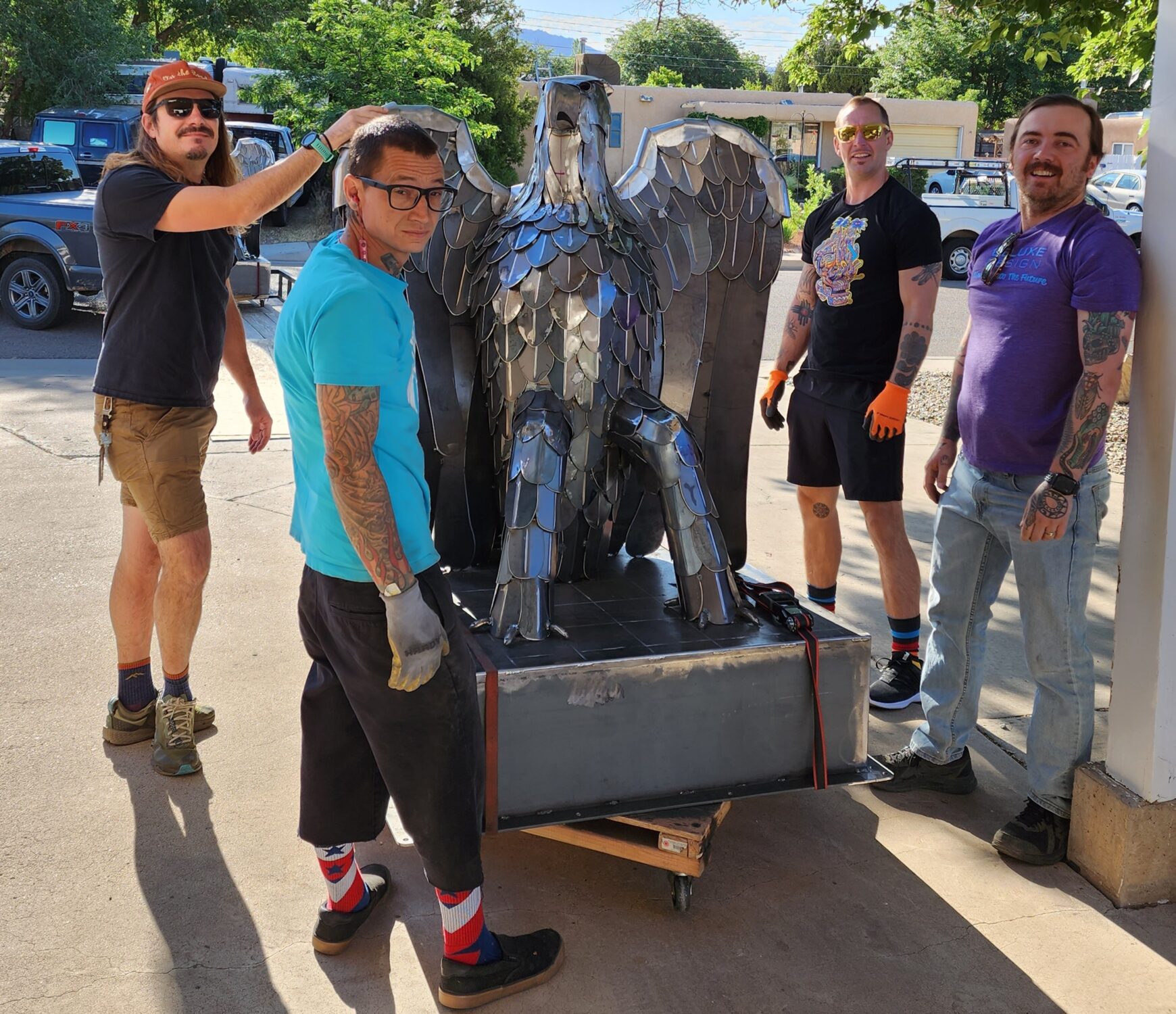
Lane Glover, Jake Smith, Nick Price, Justin Ruth.
Stepping into the stadium, Ruth reminisced what the ambiance was initially like. “Every crack, flaw and aged surface gives me a feeling of nostalgia, and respect for the craftspeople and masters of trades that brought the building to life 100 years ago. What a time it must have been!”
His personal celebration was the feeling of satisfaction of a successful adventure, and a dance with the Dave Matthews Band.
Sharing Ruth’s emotions, Smith could spend hours eyeing various architectural features. “I also love that it is vibrant and full of life. It is a whimsical place that honors its history, while granting visitors a modern entertainment experience,” he added.

A team effort, Deluxe Design VP Norm Ruth, sculptor Jake Smith, concert manager Mike Luba.
Forest Hills Stadium concert manager Mike Luba emailed Ruth on March 13 at 4:36 p.m. with links depicting the eagles. “He asked me to give him a shout, and that’s when the wheels started turning,” said Ruth. Smith received a firm go-ahead around April 10, and he would apply his handiwork for an amazing 345 hours spanning seven weeks.
“Each sculpture is 513 pounds and 64 inches in height, with approximate 48-inch wide wings, shoulder to shoulder,” continued Ruth. The steel eagles are powder-coated with a semi-holographic glimmer in “Interstellar” color.

Side by side eagles under 1923 cornerstone.
Smith, who sculpted eagles that he considers a modern interpretation of the originals, explained a detailed process. “I was given several historical photos and a video in which one of the surviving (uppermost) eagles was measured at several points. Norm produced large-scale prints of the historical photos. I was then able to transfer the measurements from the video onto the prints, and properly scale the sculpture as I built it.”
After determining the scale and proportions, Smith mainly worked from the bottom up, originating with the bases that house much of the lighting. He explained, “I built a tubular structure that acted as a framework in which to add and shape feathers, as well as a guidepost for proportions and symmetry. I made templates for the various types of feathers, cut them out, and shaped them. Throughout the sculpture, I left air gaps and spaces around the feathers for the internal lighting feature. The heads involved the most metal shaping. They are made from 18-gauge steel, which is the thinnest on the sculpture. They were made using an English wheel, hammer and dolly, and a shrinker/stretcher system.”

Transporting a nearly replicated eagle into the colonnade.
All great projects are built on challenges, and in this case, it was a tight timeline. “I put other work on hold to complete this project, but I could in no way sacrifice quality or detail for the sake of a deadline. It meant long hours in the shop, and my wife, Kayleigh, taking over a lot of my parenting and household responsibilities. I couldn’t have gotten through it without her,” said Smith.
Projects at the stadium materialize due to a history of close bonds. The trek from New Mexico was combined with visiting family members and friends. Ruth explained, “This ‘sneak peek’ tour was very much in the spirit of flying high with eagles, as we were grounded in the warmth of our visits. We stopped at Jake Smith’s cousins in Tulsa, Oklahoma and St. Louis, Missouri. I was able to visit my sister in Springfield, Ohio, and a dear friend at an assisted living facility in Princeton, New Jersey.”
Luba and Ruth met in fall 1997 at a String Cheese Incident concert in Gallup, New Mexico. Norm reminisced, “I drove our bus, Terrapin Trailways, and provided lighting special effects using oil projectors, similar to the early concerts in the 1960s. The folks that put on this event were unveiling a large sculpture of one of the late Jerry Garcia’s guitars, ‘Rosebud.’ This sculpture can be seen when traveling along I-40 at an outdoor sculpture garden. We have remained close brothers ever since, engaging on endless fun and creative projects.”
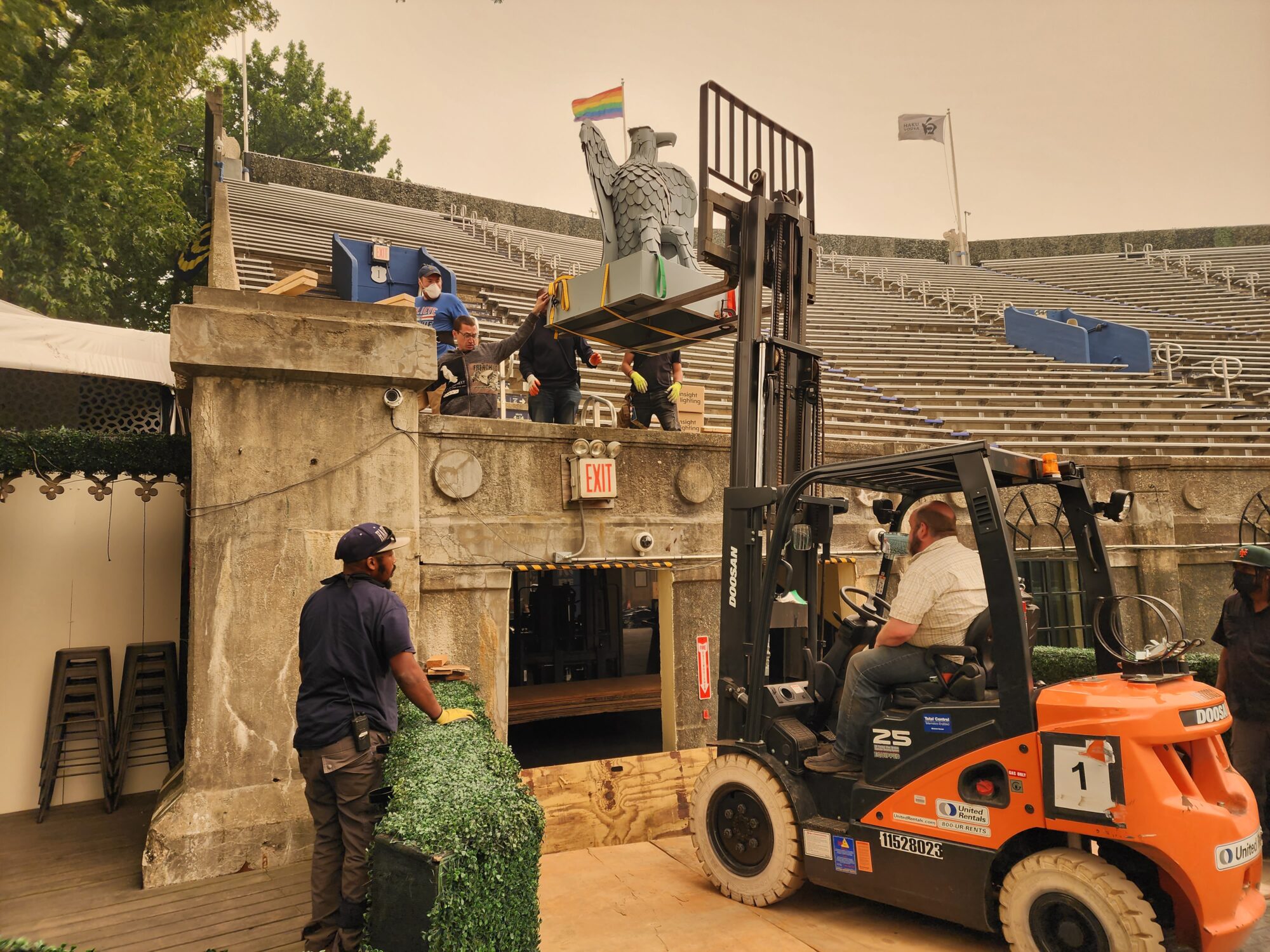
Hoisting up an eagle, Eddie on left, Forest Hills Stadium General Manager Jason Brandt on right.
Deluxe Design is on a mission to design and create exceptional signs, awards, and screen-printed products through optimism, teamwork, and collaboration. Ever since 1986, the firm has been considered an industry leader that maintains solid relationships with organizations and individuals, which span local companies to international corporations such as Live Nation, AEG, Samsung, and Intel. They take pride in identifying a client’s needs and employing a collective organizational experience to facilitate plans for design, execution, and utilizing state-of-the-art equipment and technology to yield exquisite results.
Smith’s mission is to feed his passion, but not without feeding his family. “I’m completely addicted to making things with my hands, and this is what I have to do for a living,” he said. “There are causes that I am passionate about, and sometimes use my art to support it through donating proceeds.”
What can be considered a sculpture is debatable. Smith’s early career focused primarily on hand-built motorcycles, where many were featured internationally in magazines and on television. He also feels fortunate to be selected as one of six artists to create functional public art in Sartell, MN from remnants of a historic paper mill that succumbed to a fire. “I had a well-received series of five metal sugar skulls. I have also been showing a metal butterfly pierced with a two-foot safety pin that I absolutely love.” As for functional art, he creates artistic gates, handrails, and benches.

Let there be light with two eagles at Dave Matthews Band concert.
Unlike the two original eagles that vanished less than three decades after their installation in 1923, the replacements are here to grace and energize the next generations of concertgoers at the historic Stadium.




